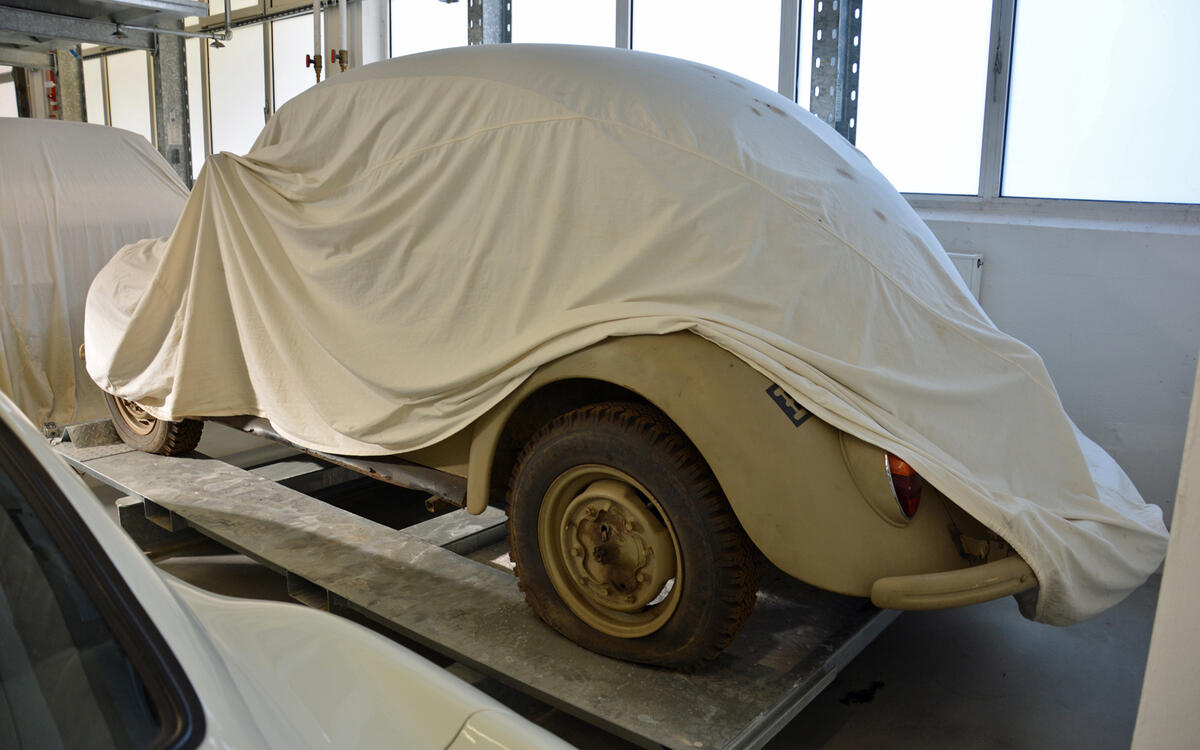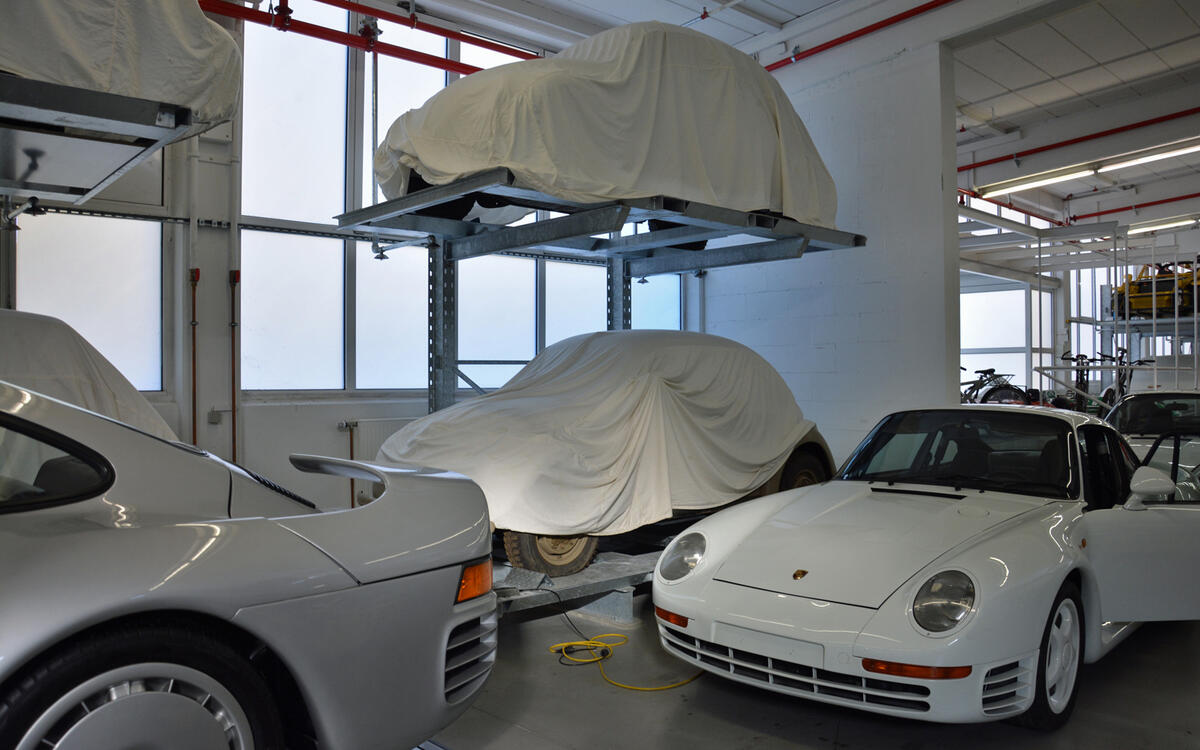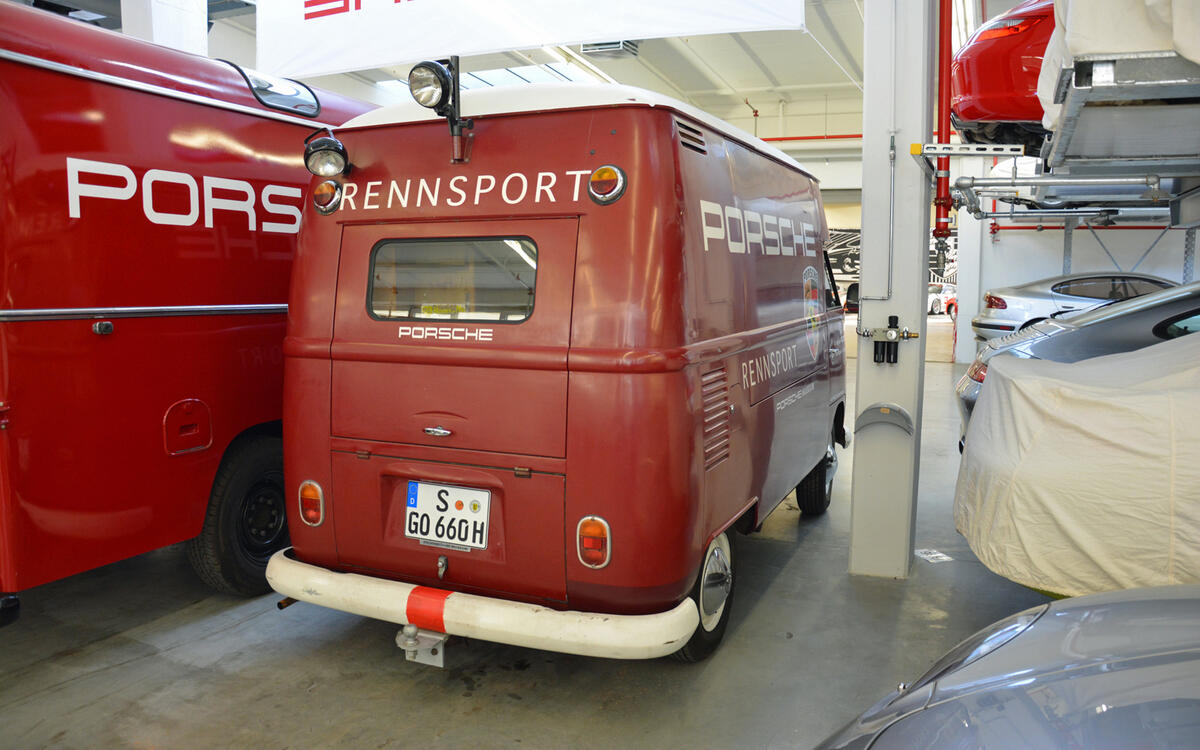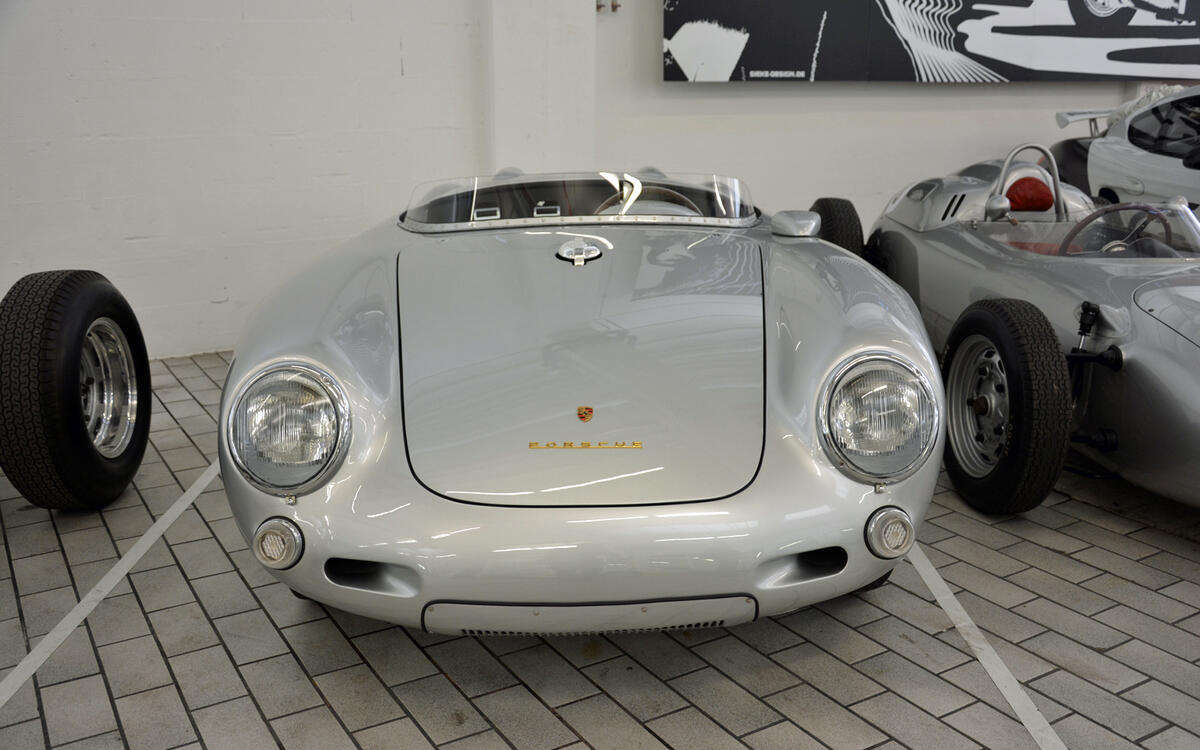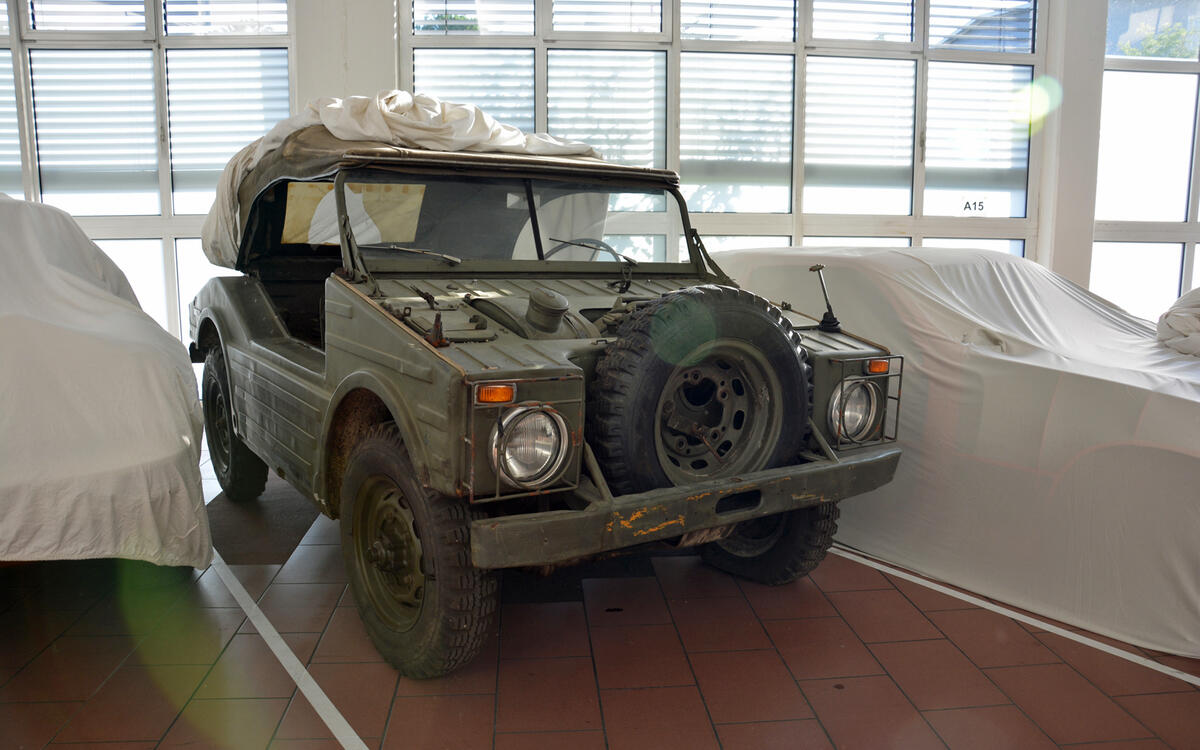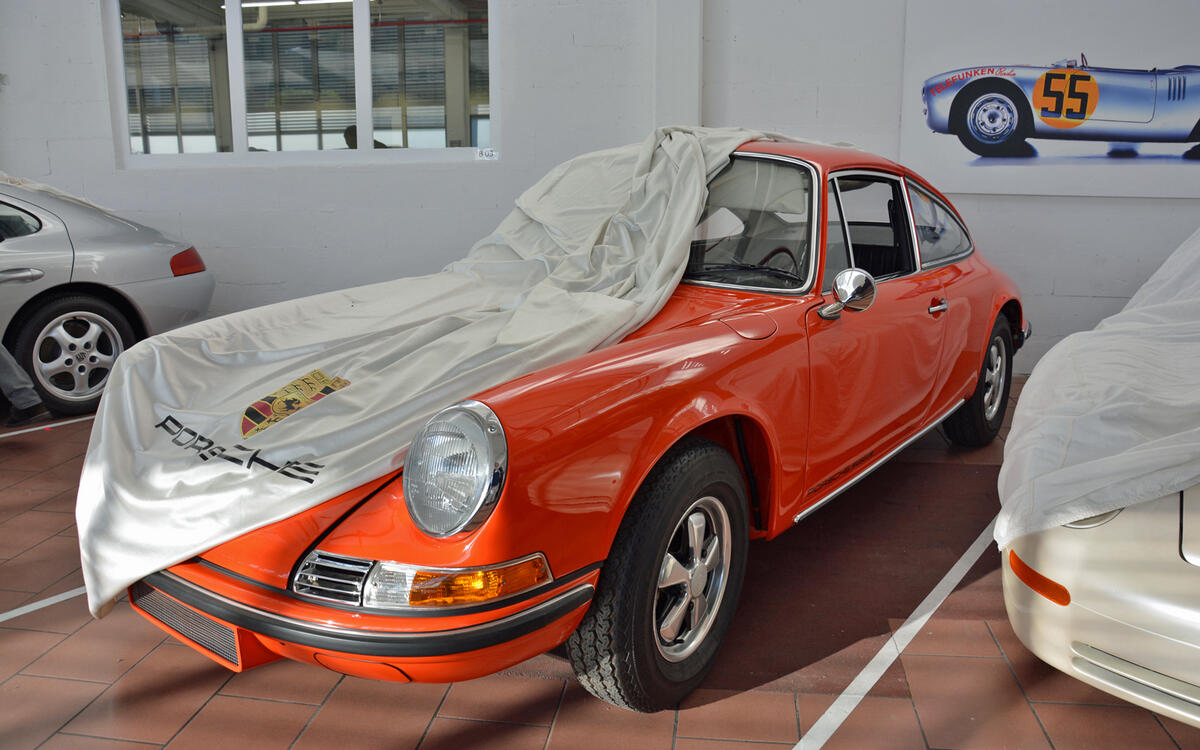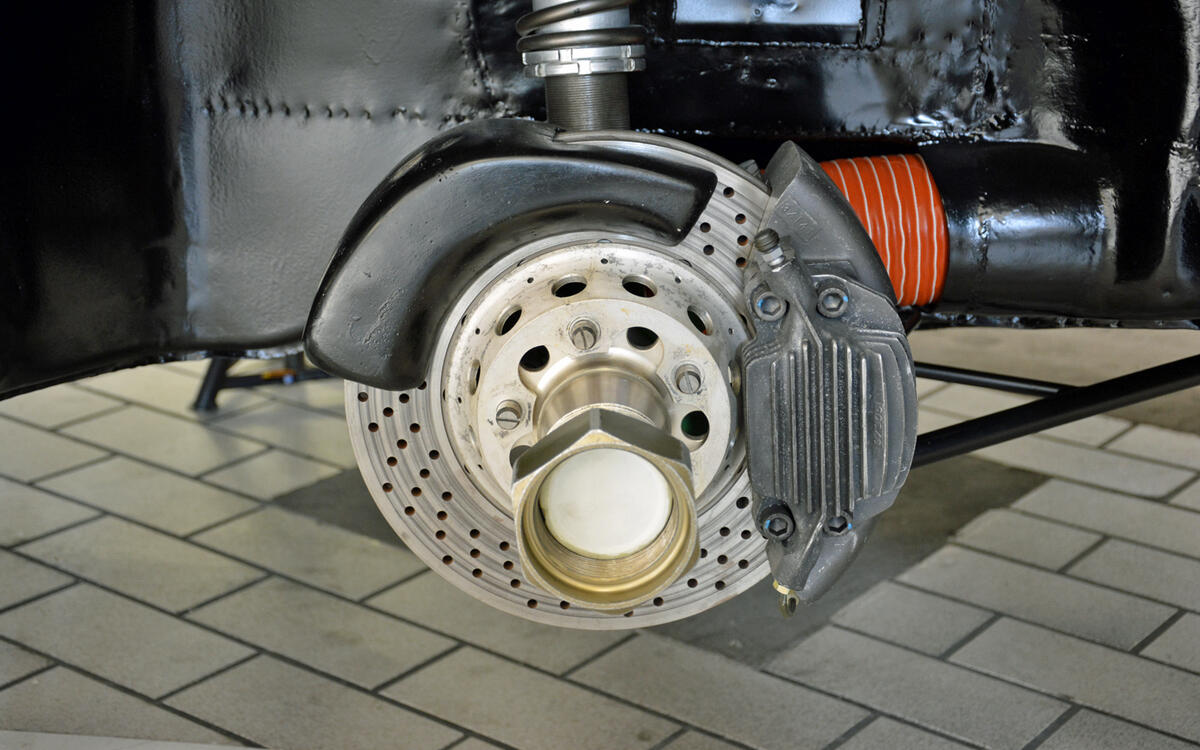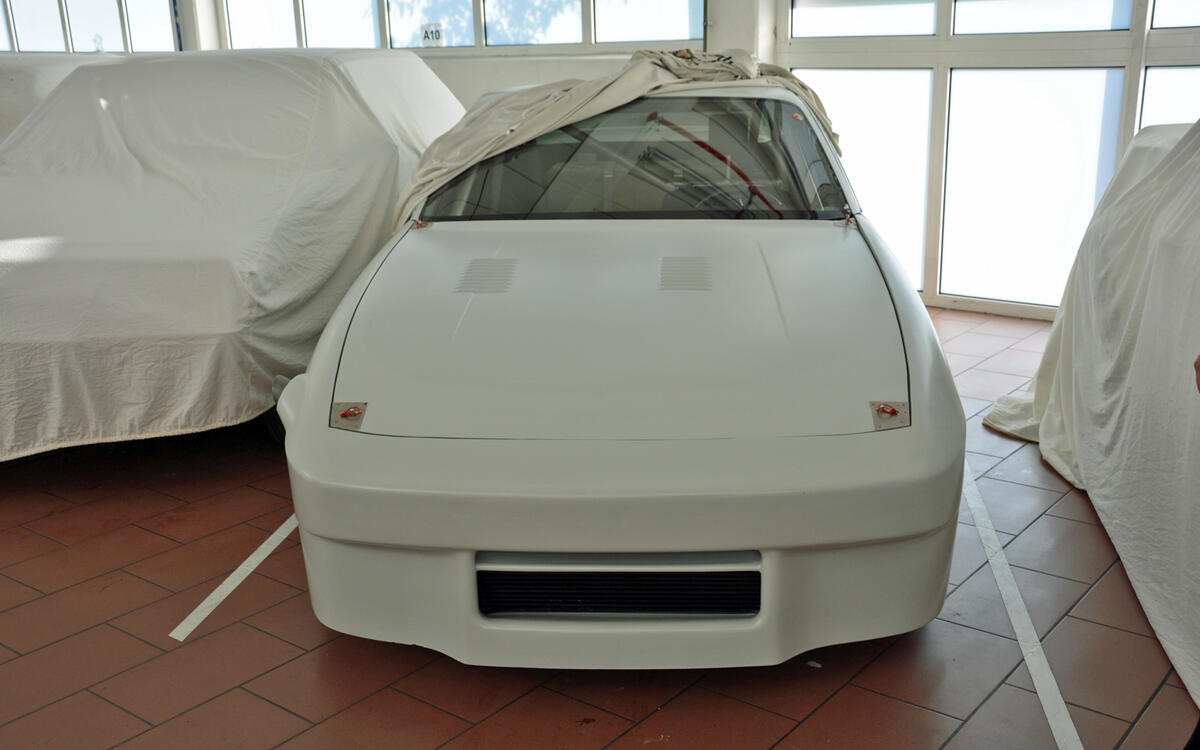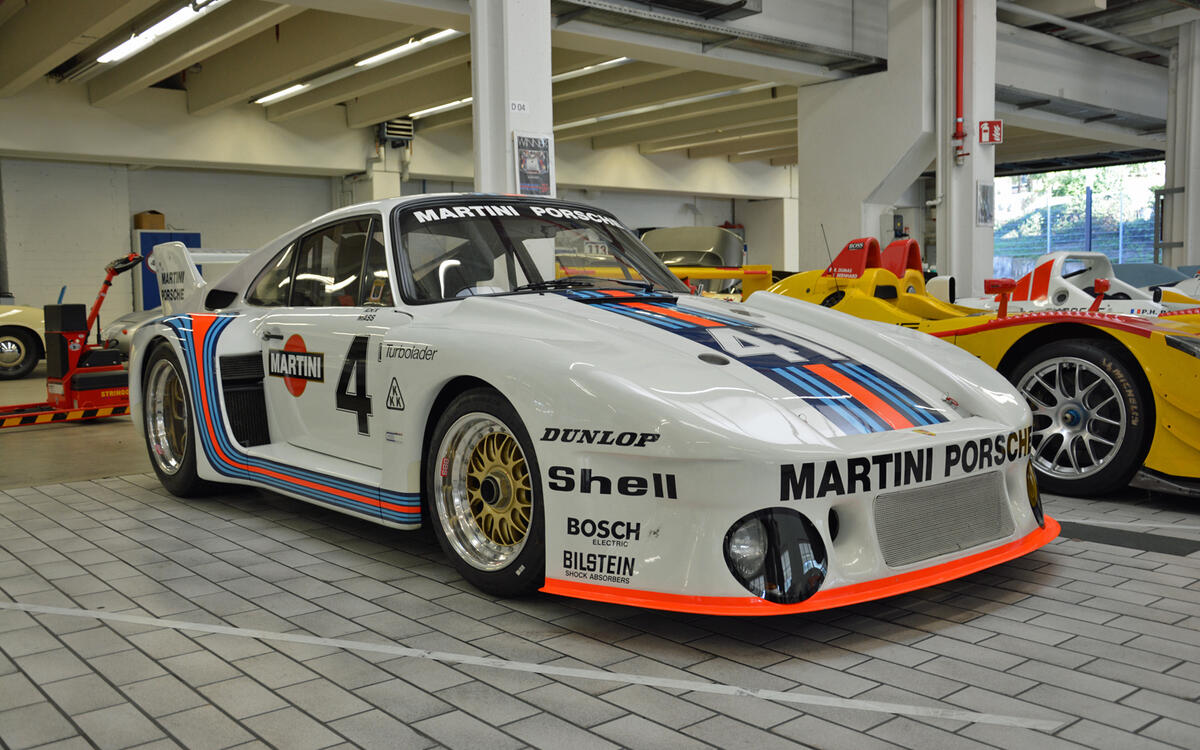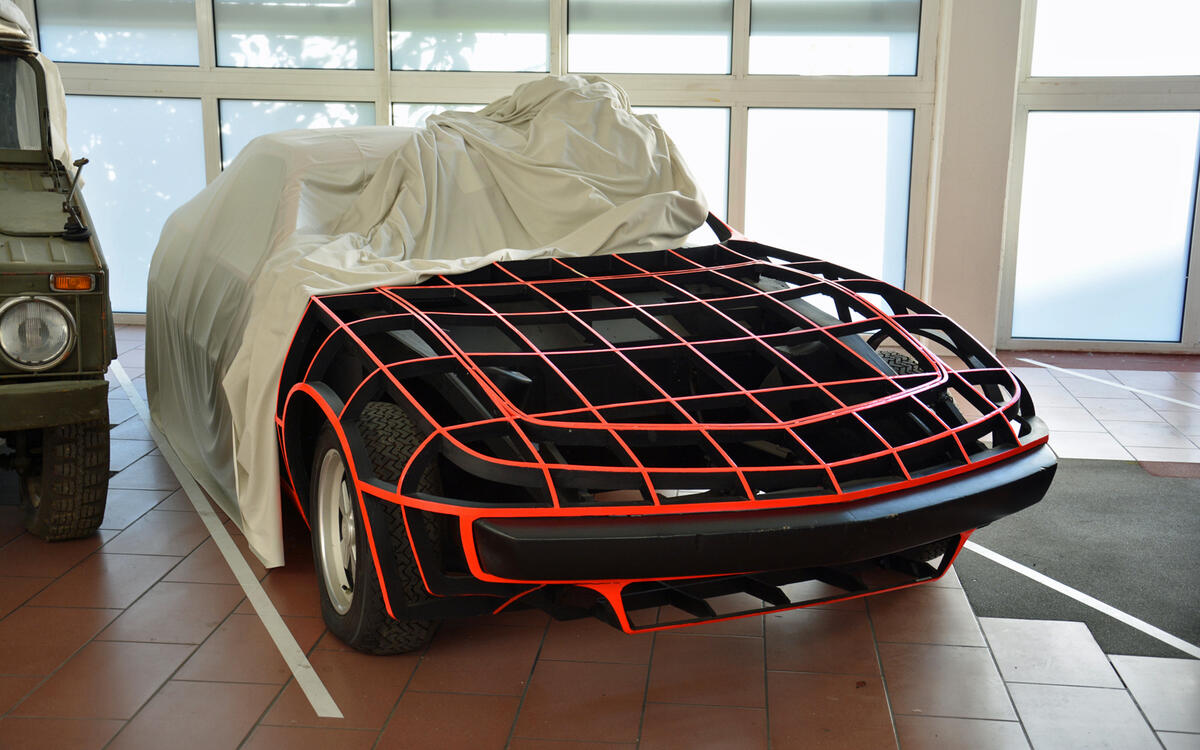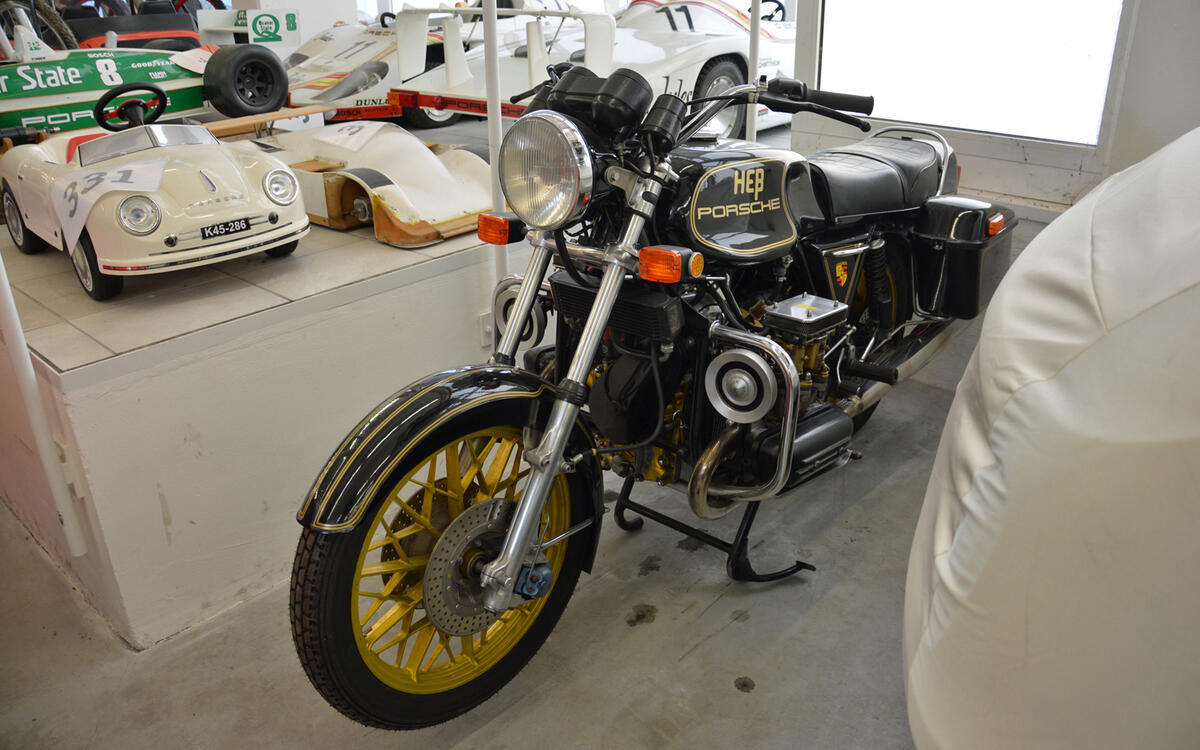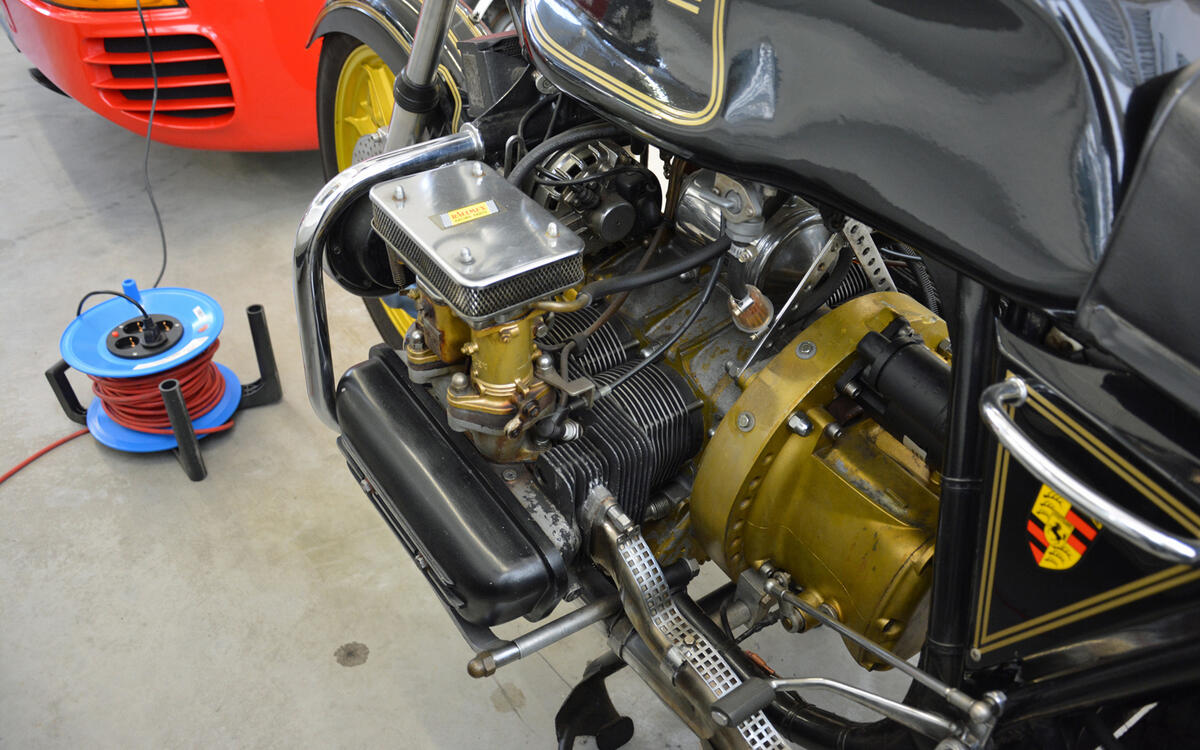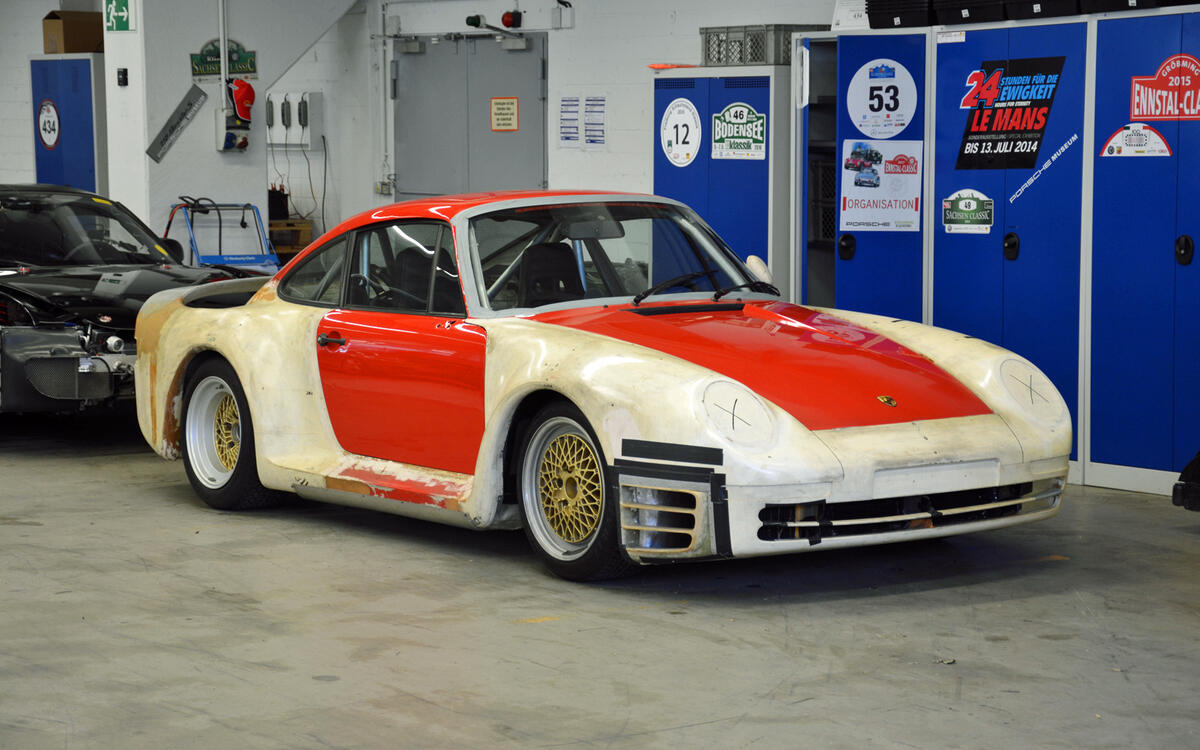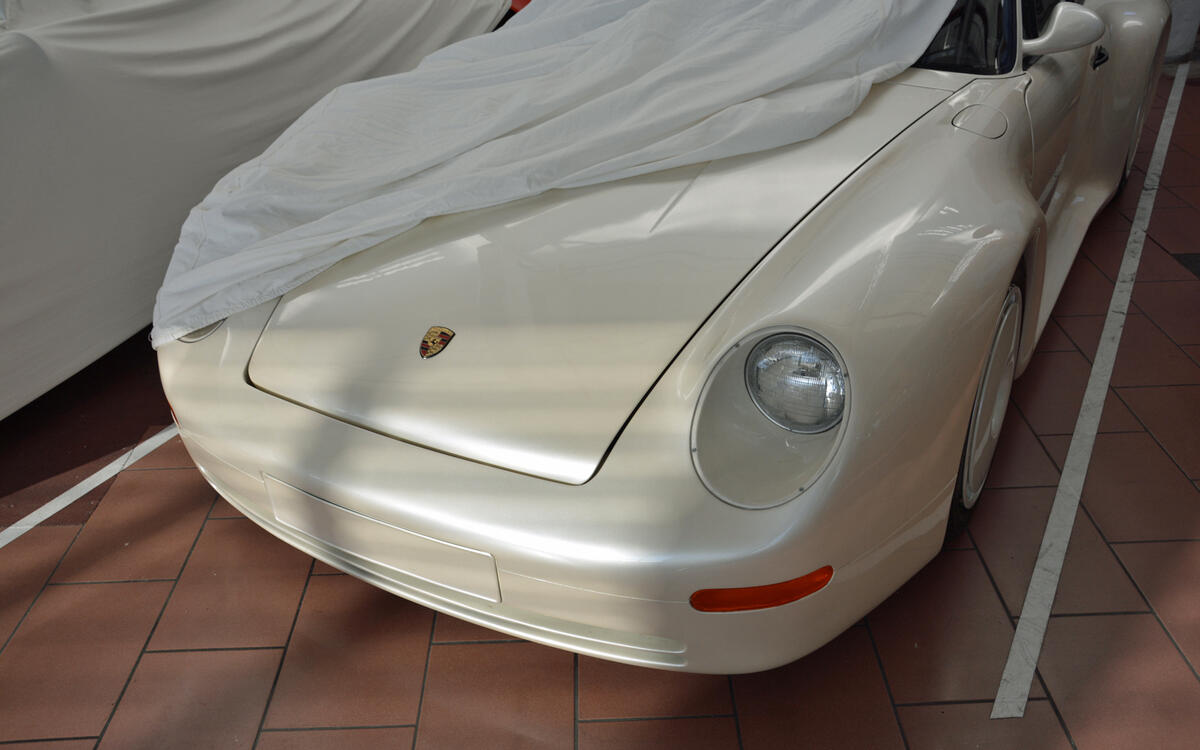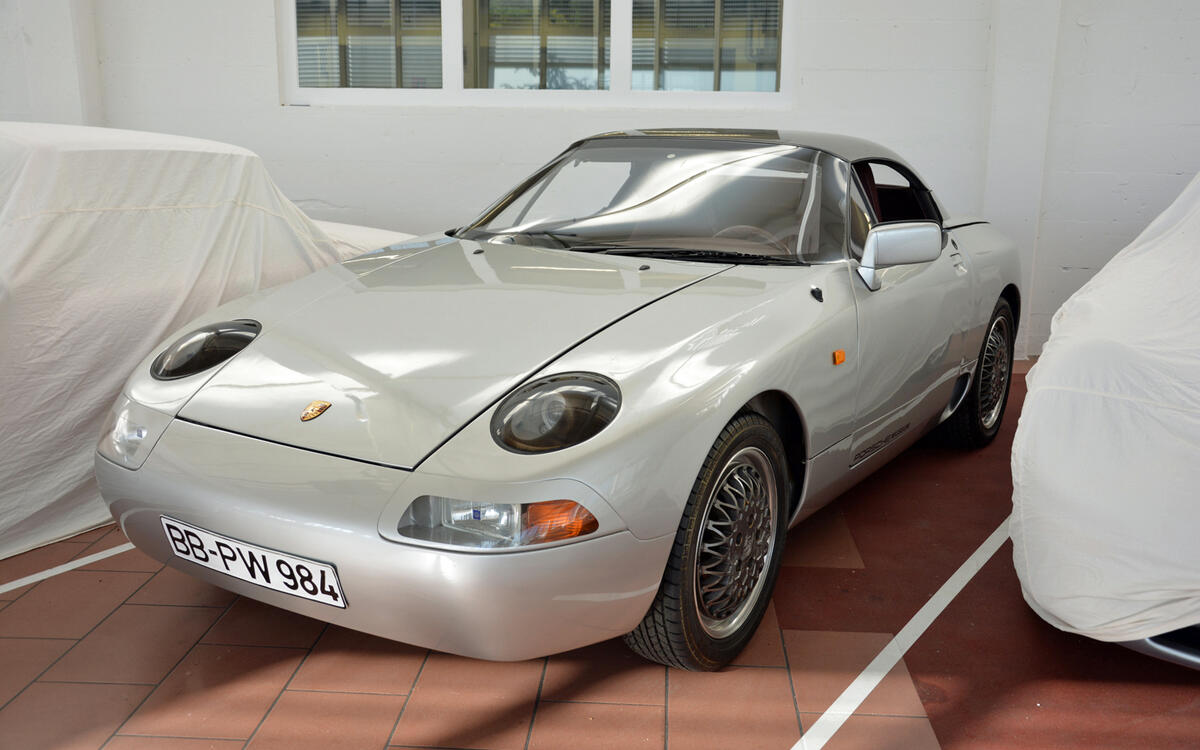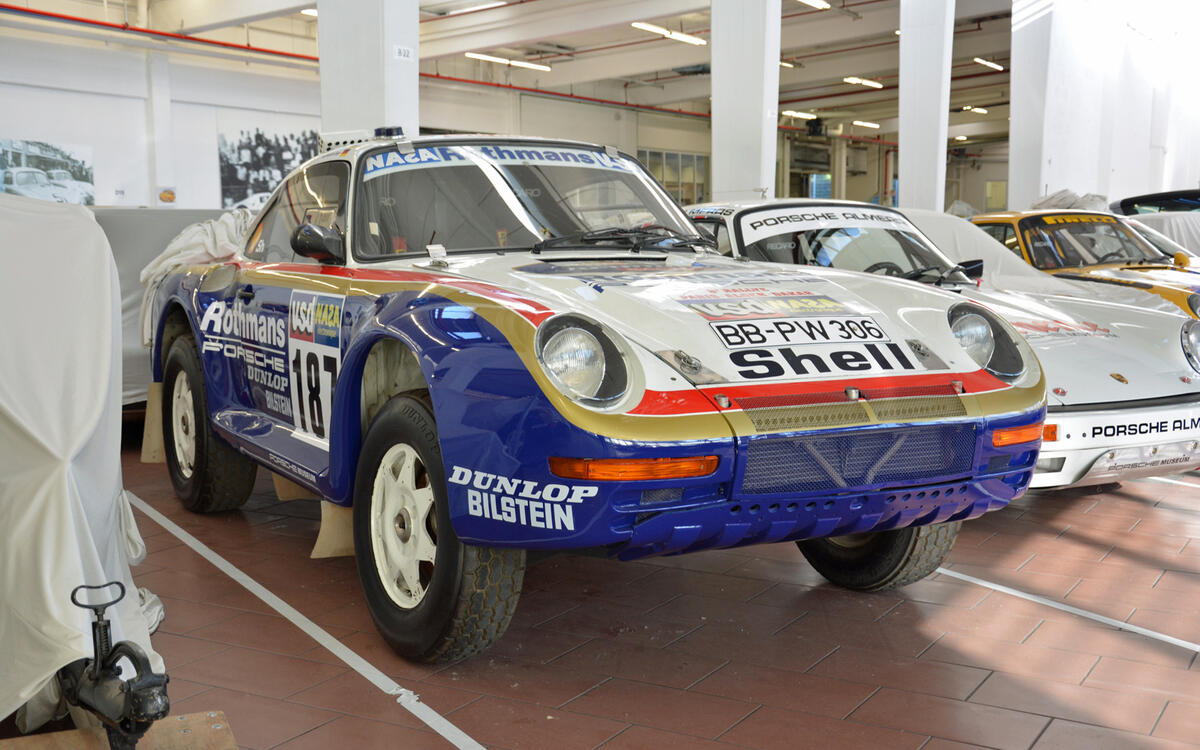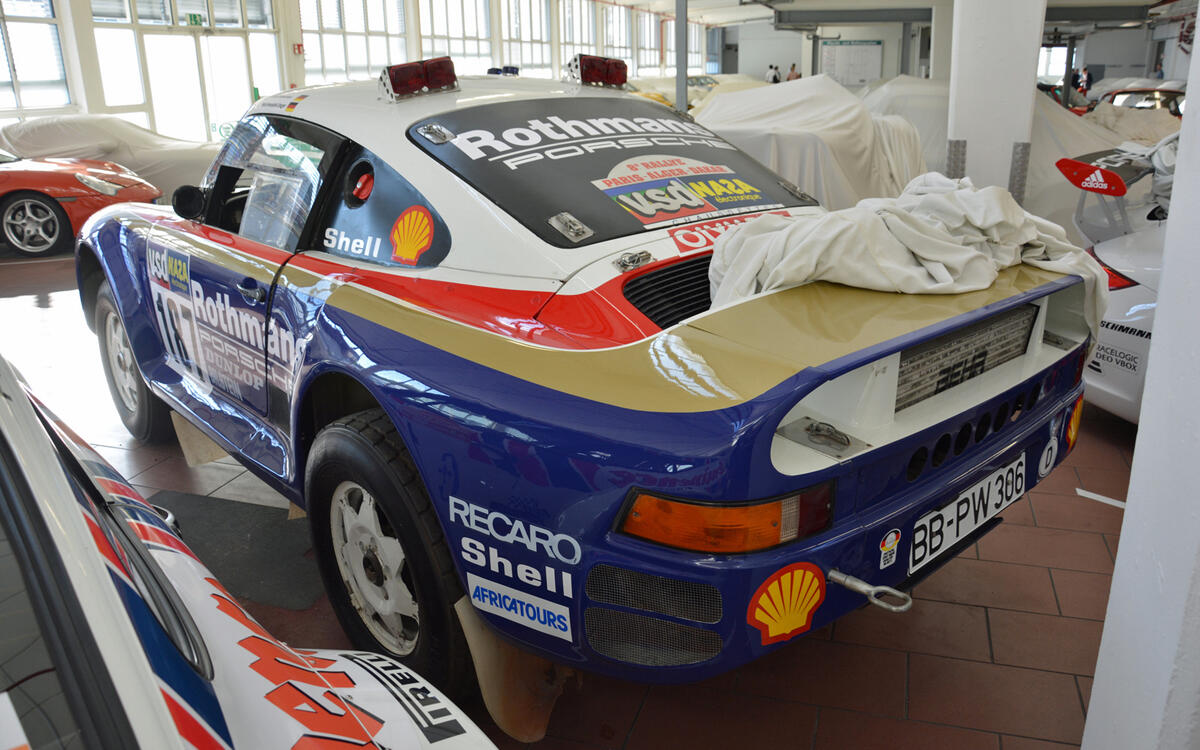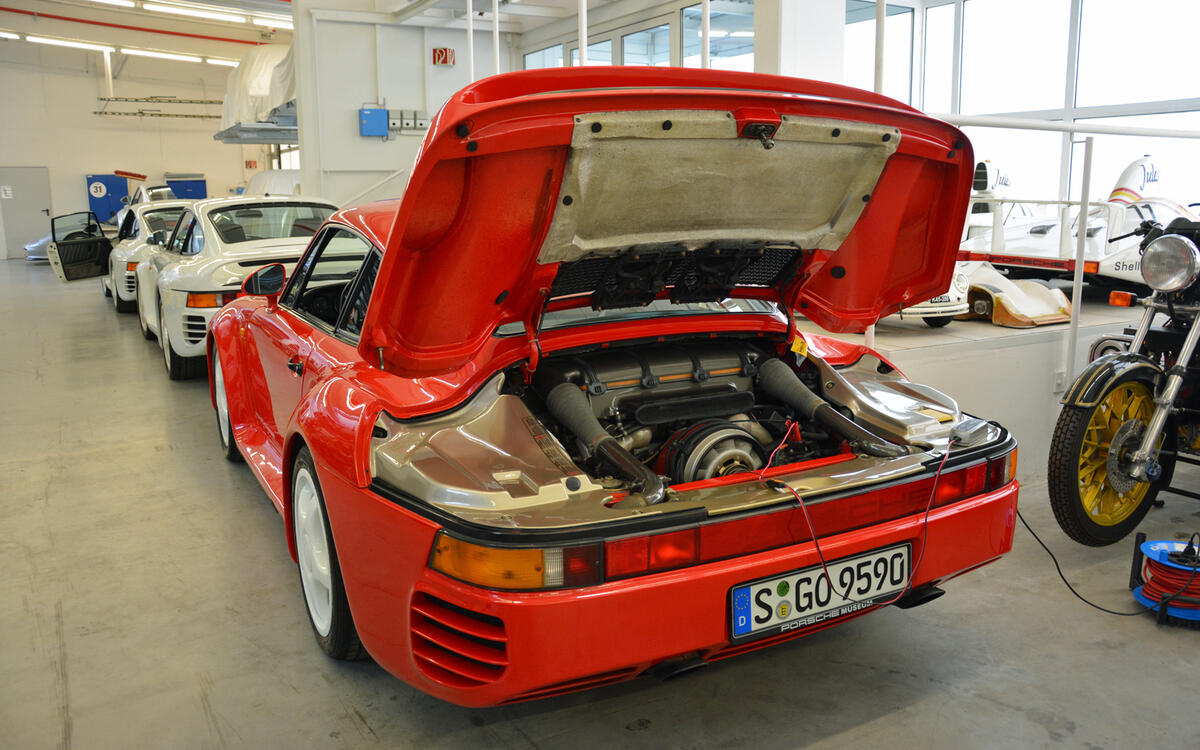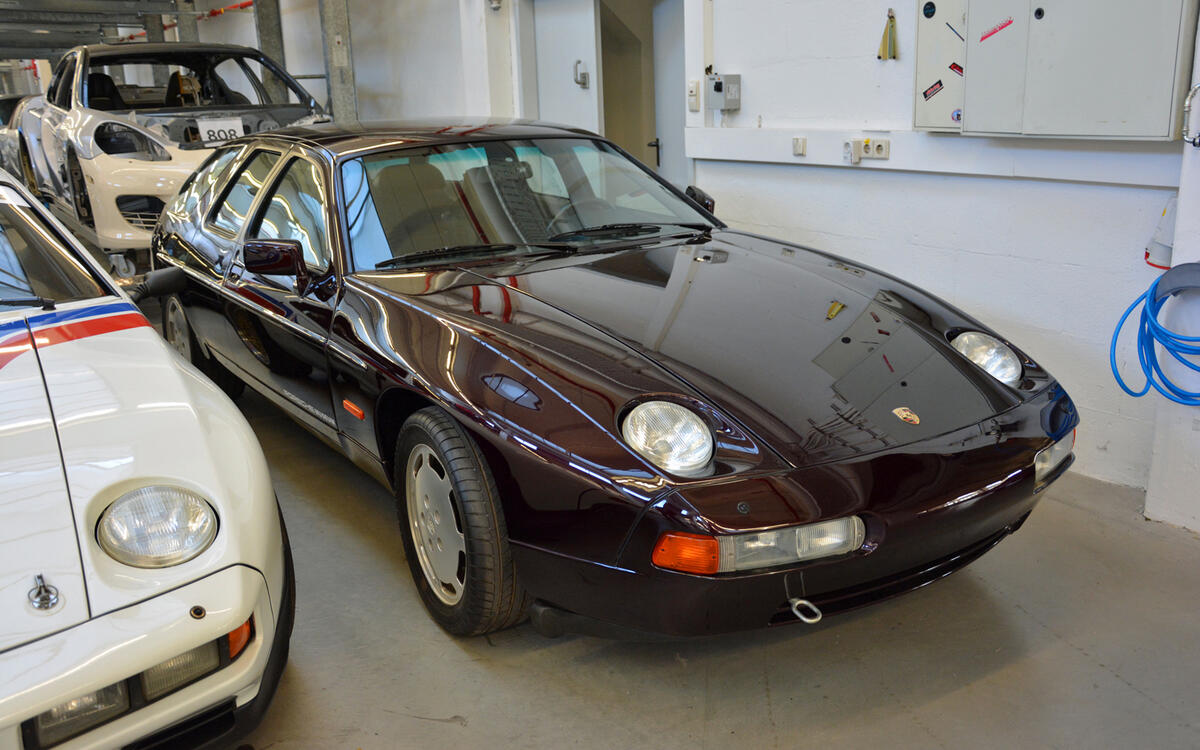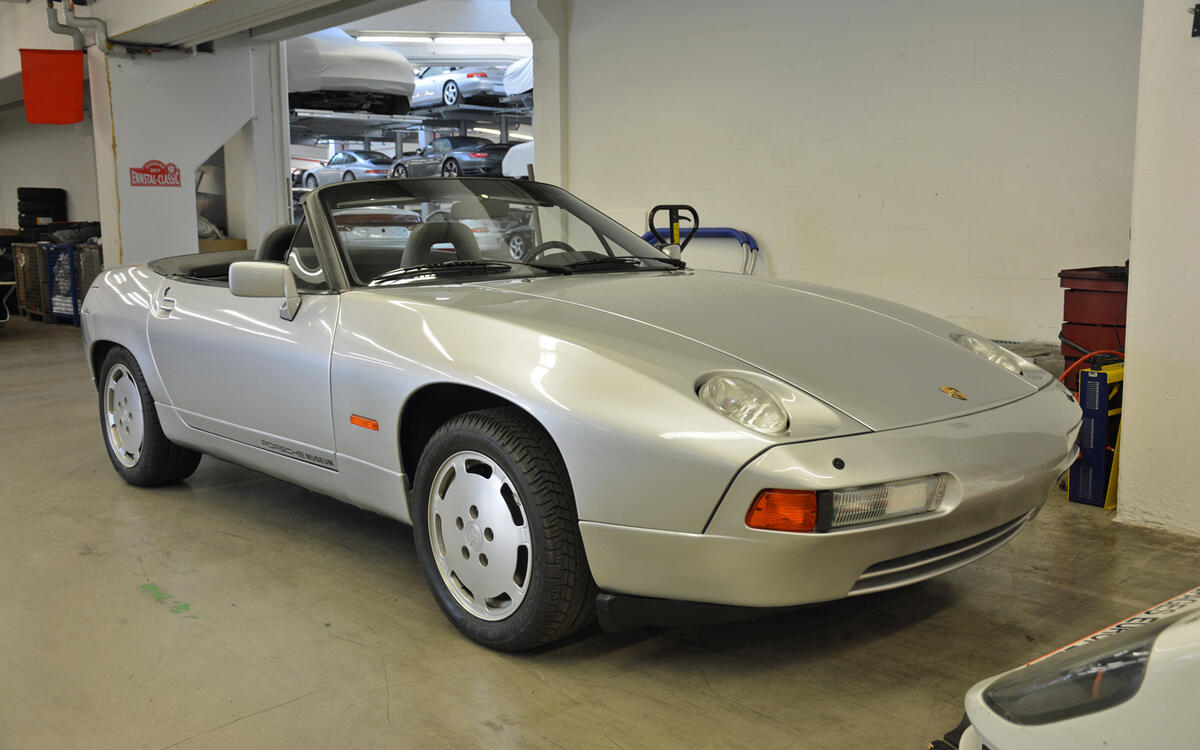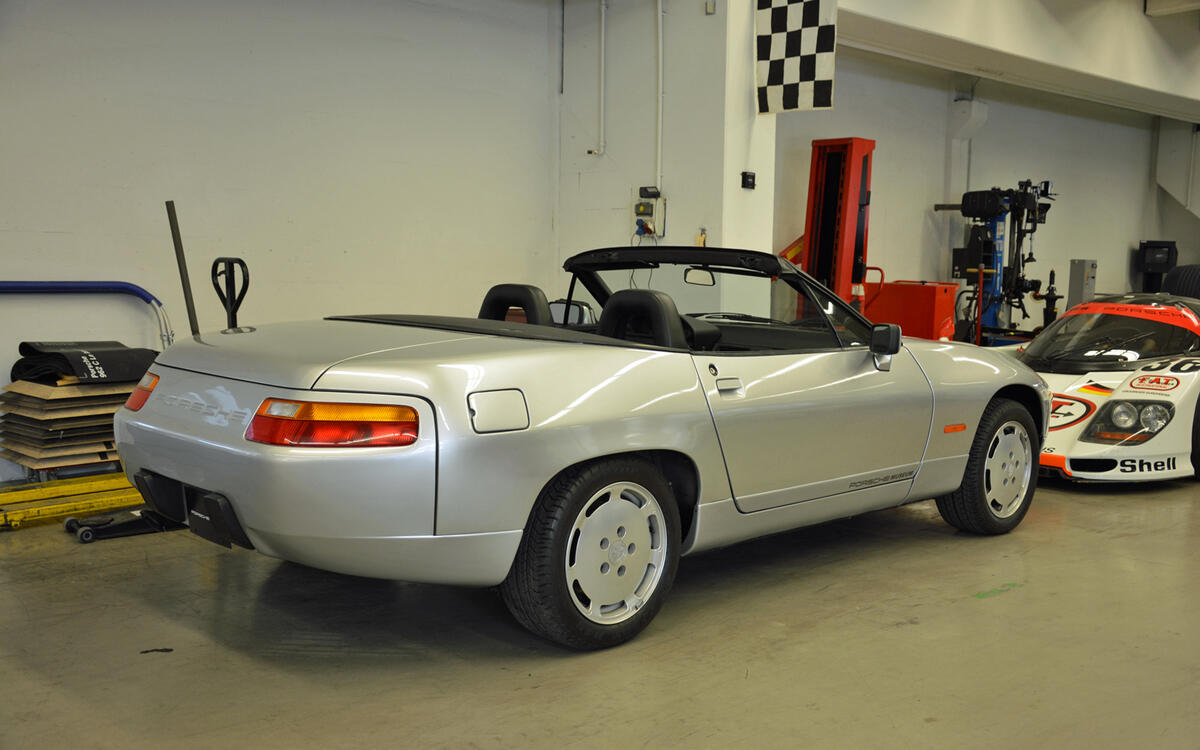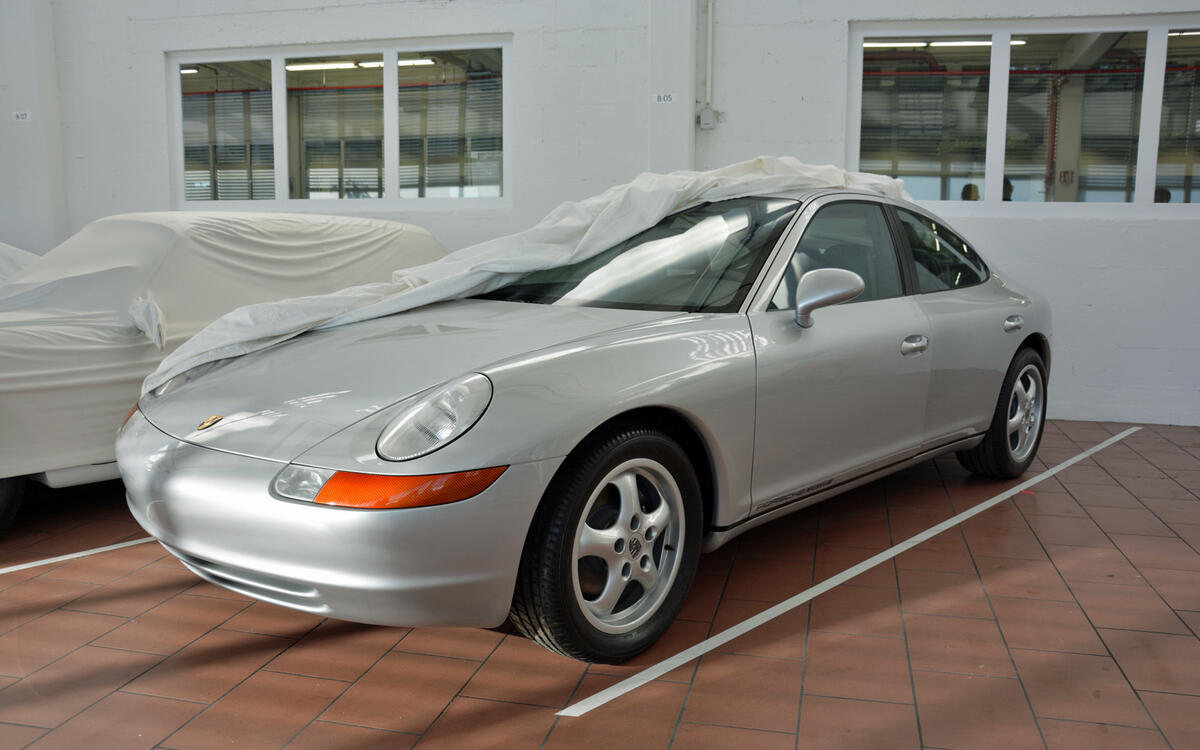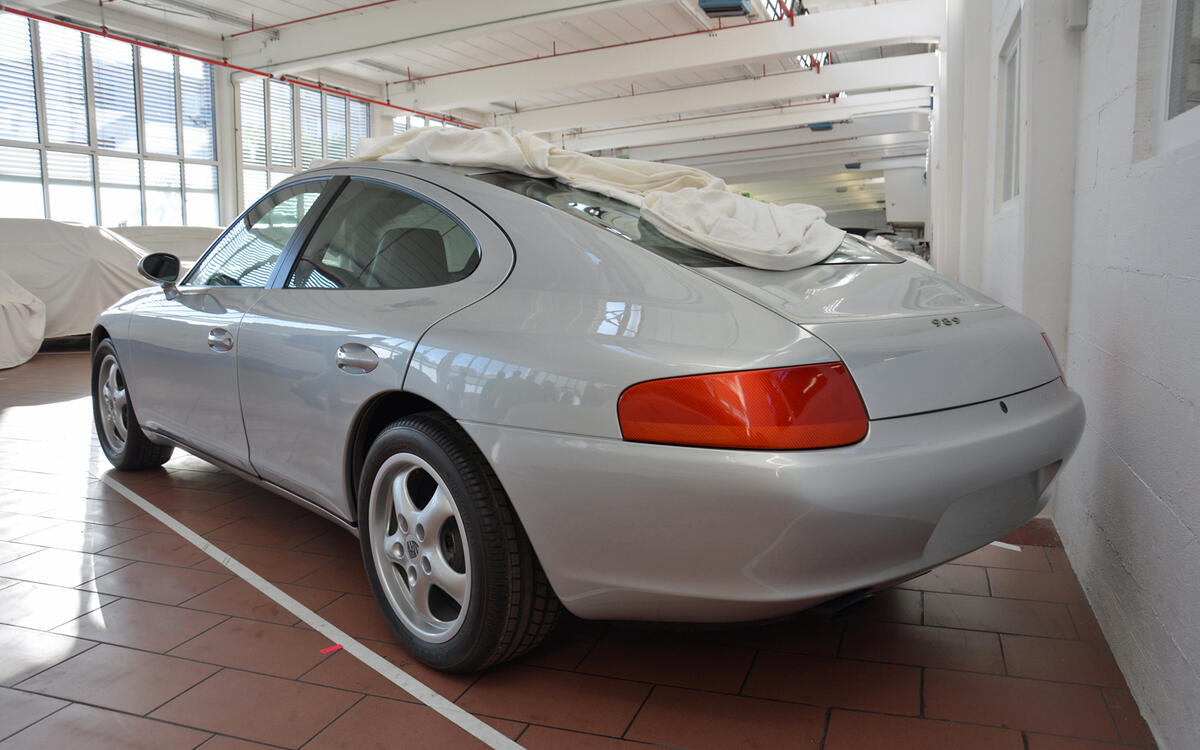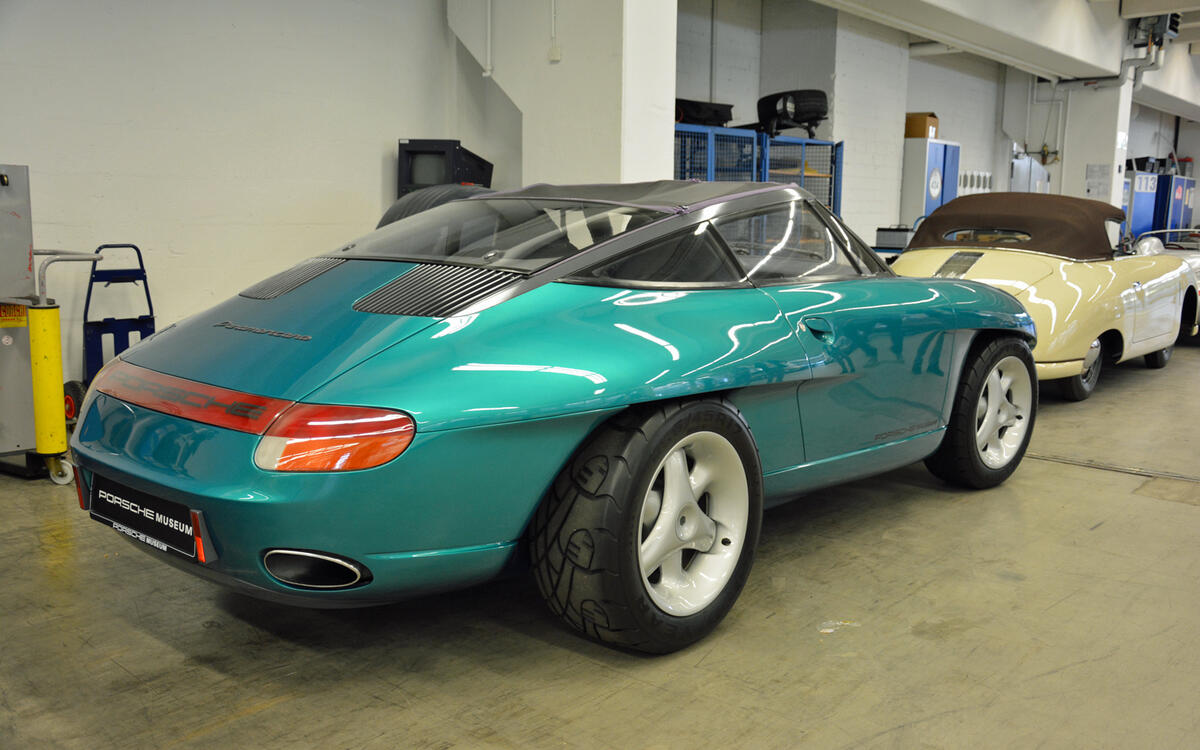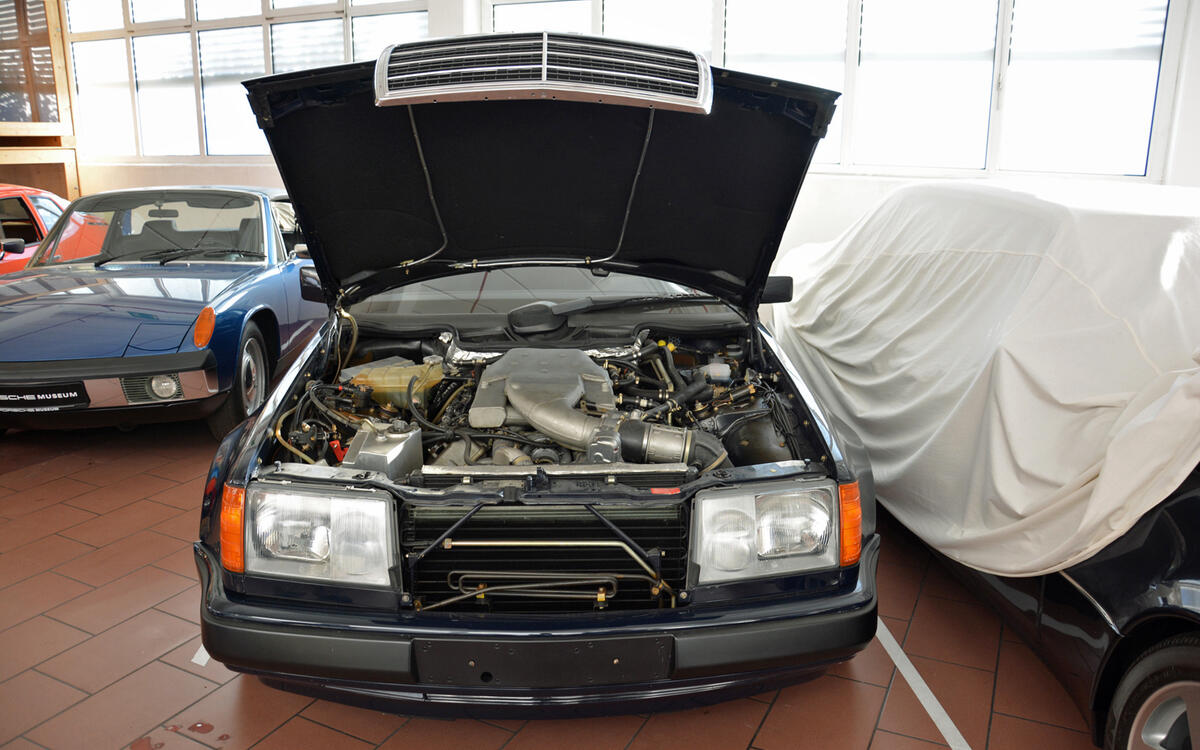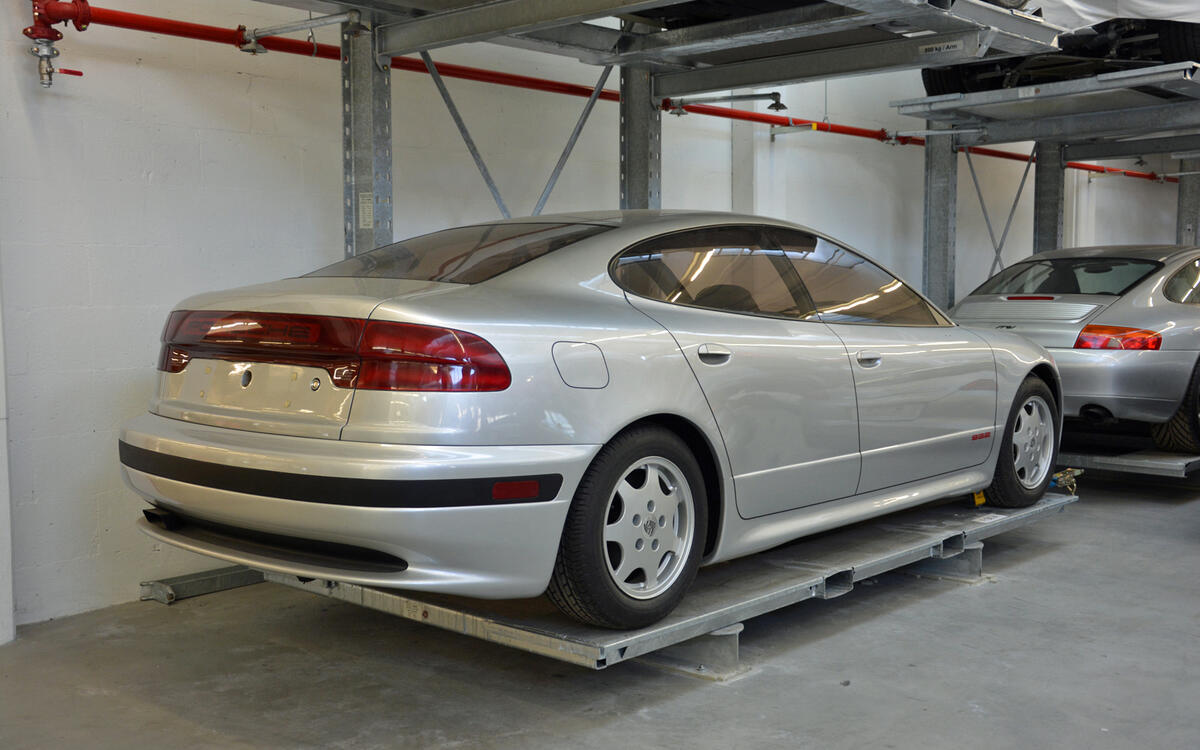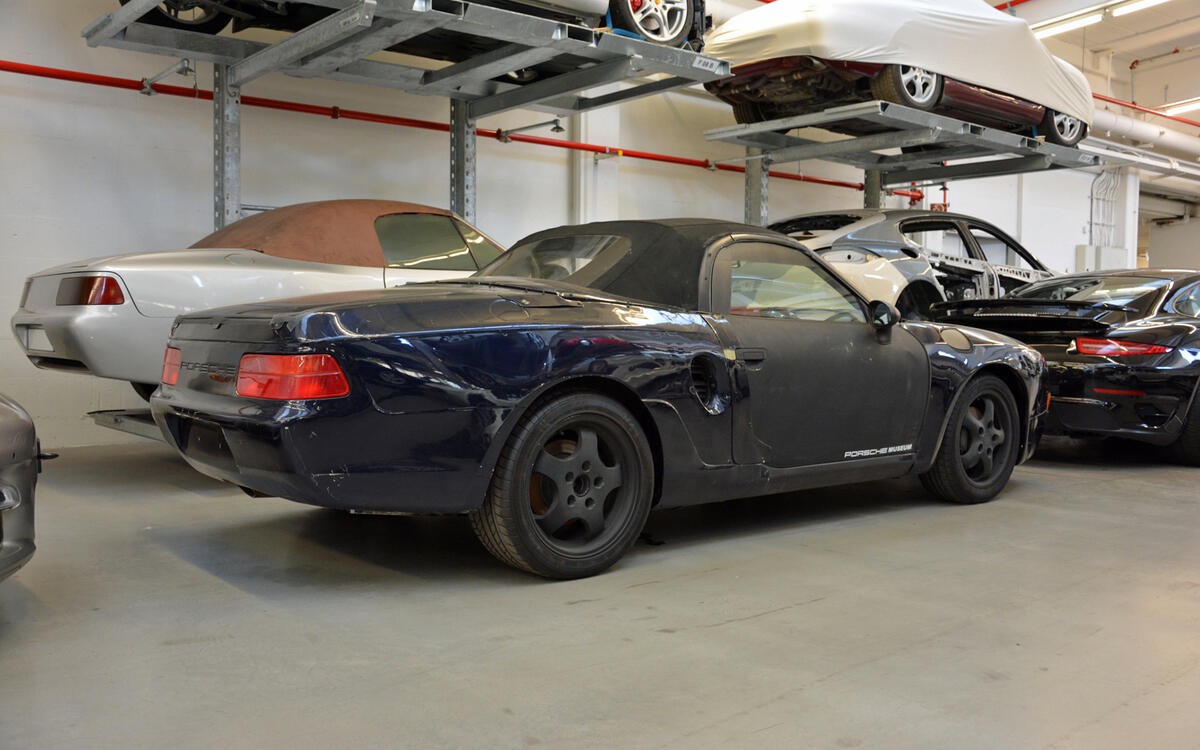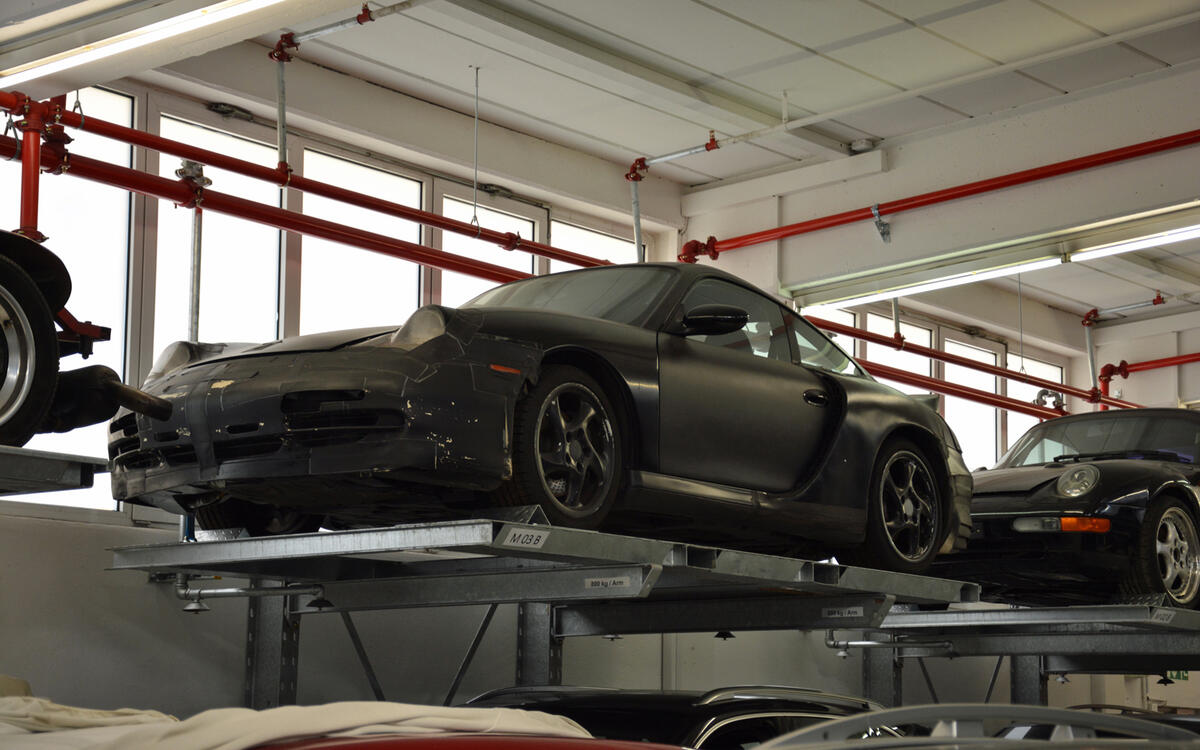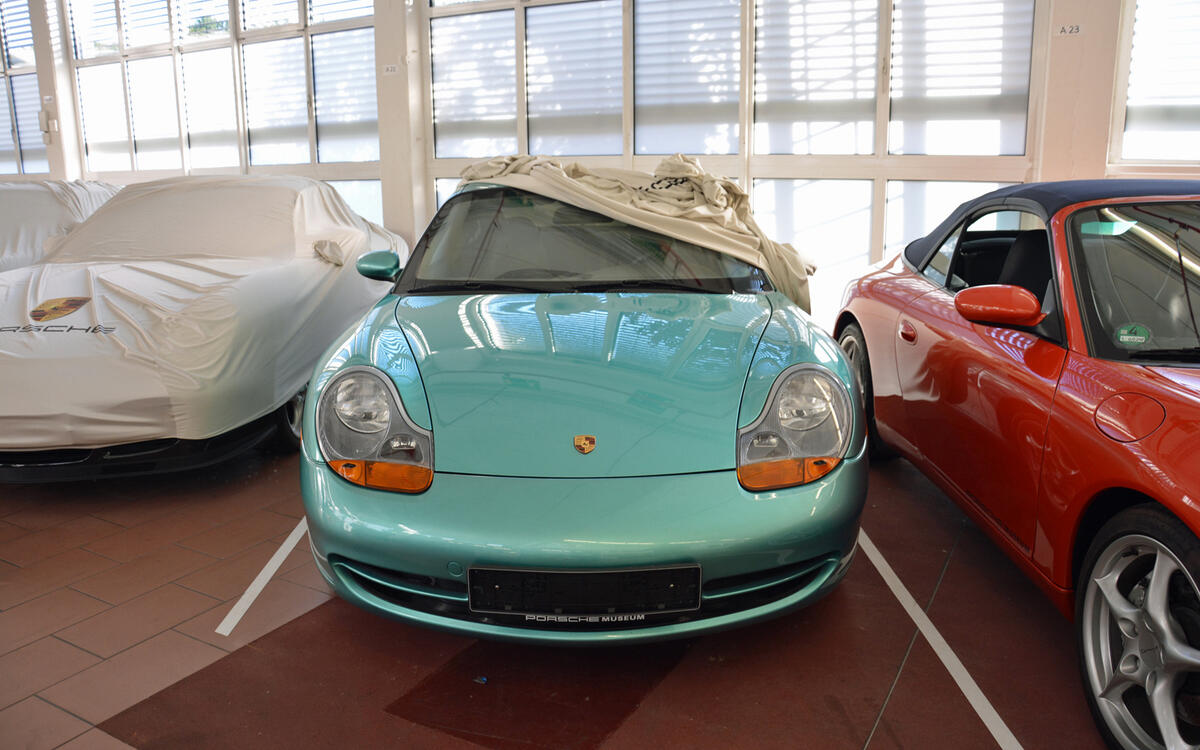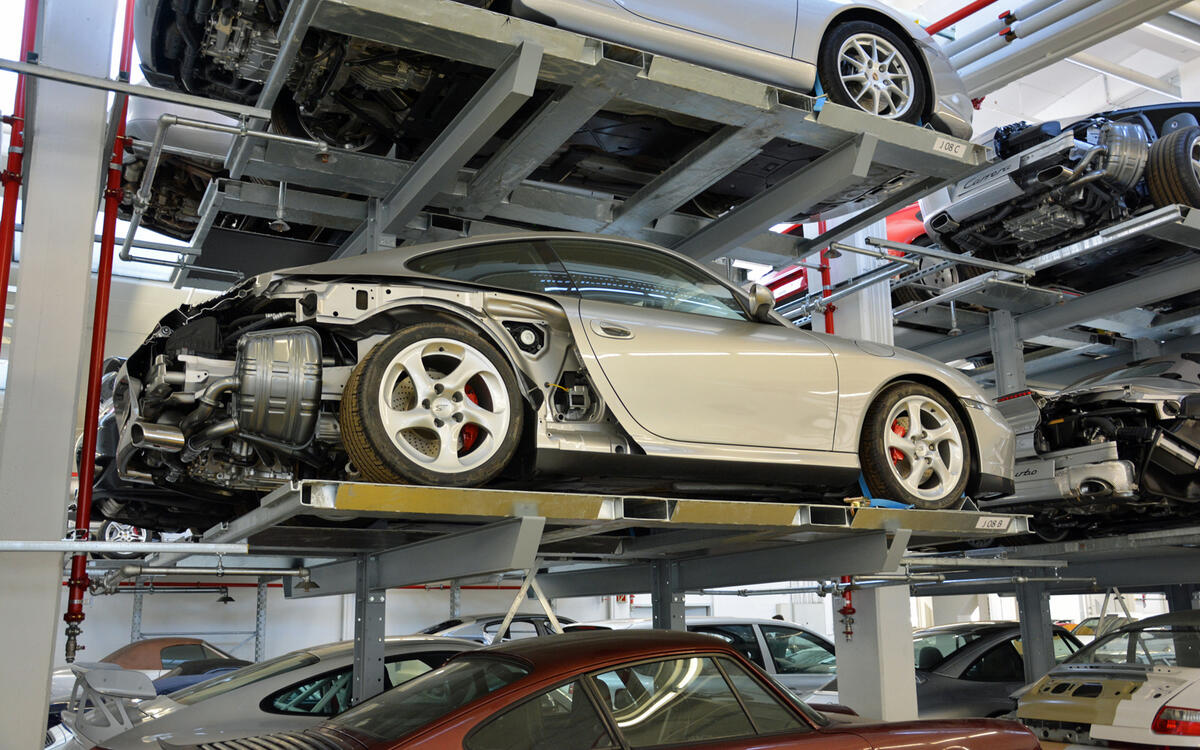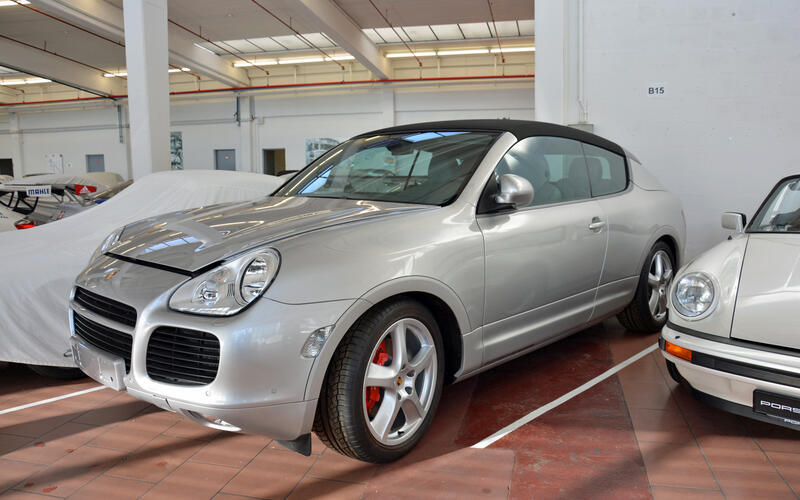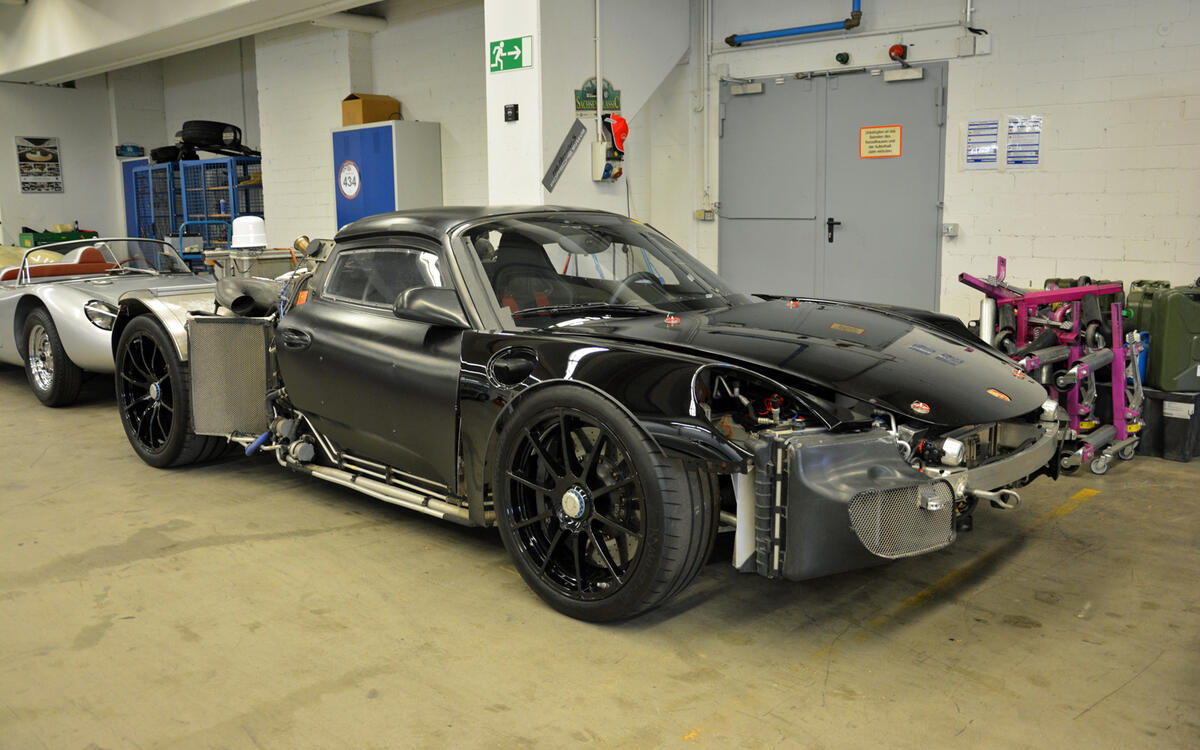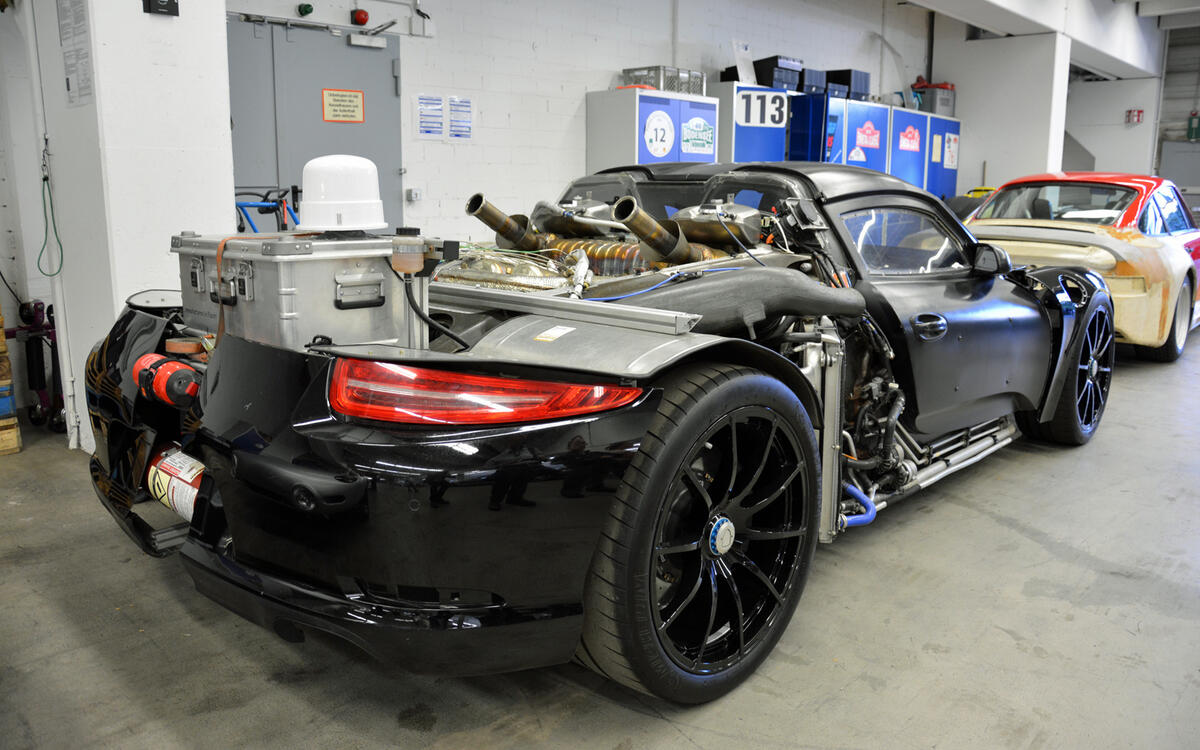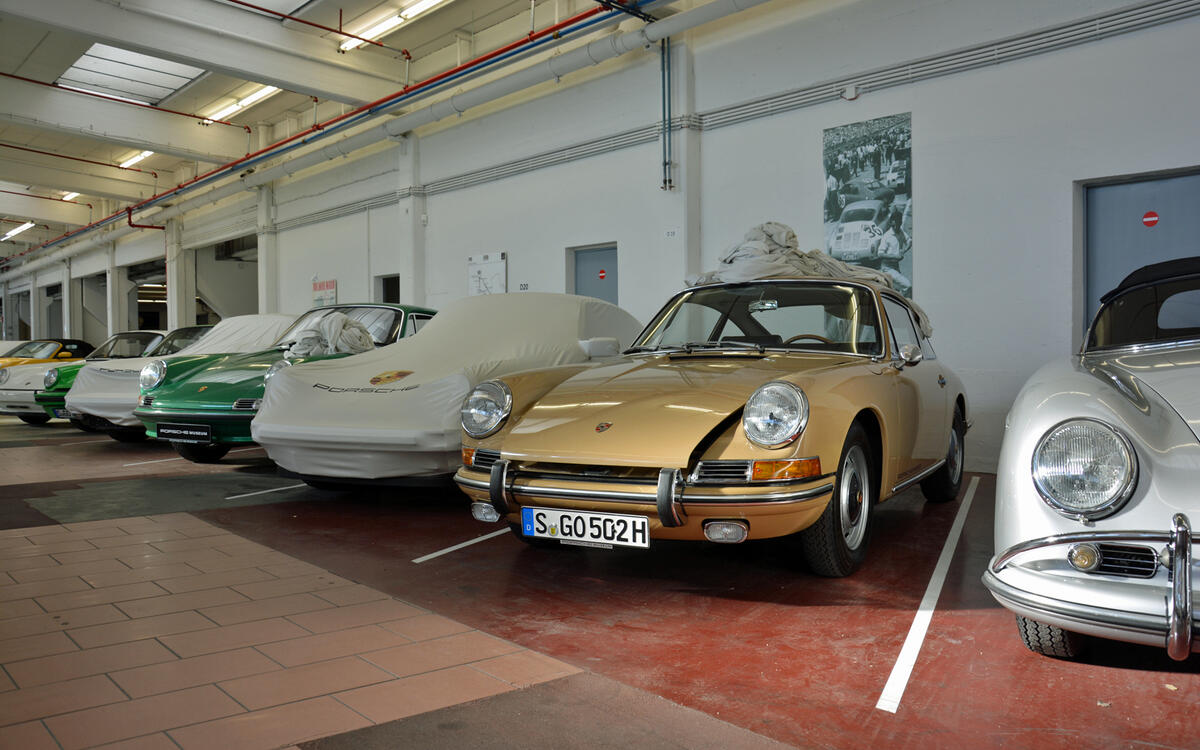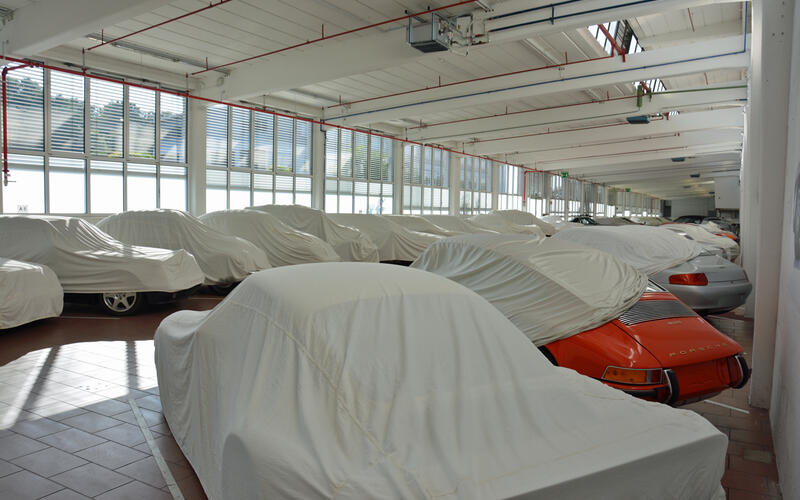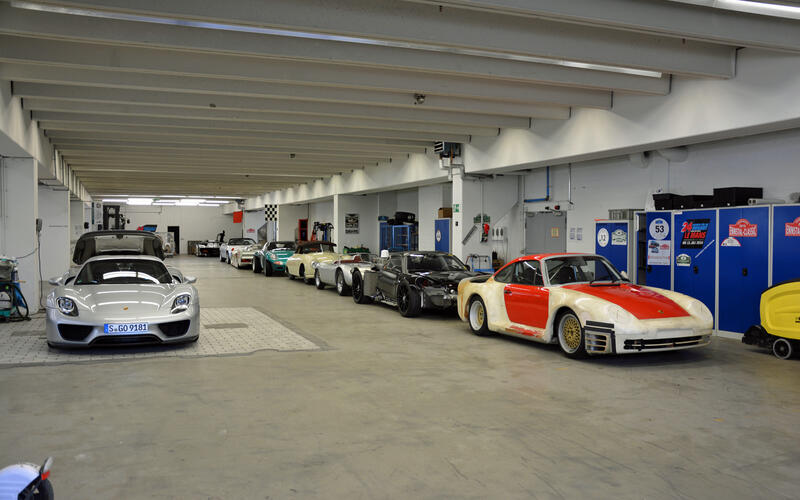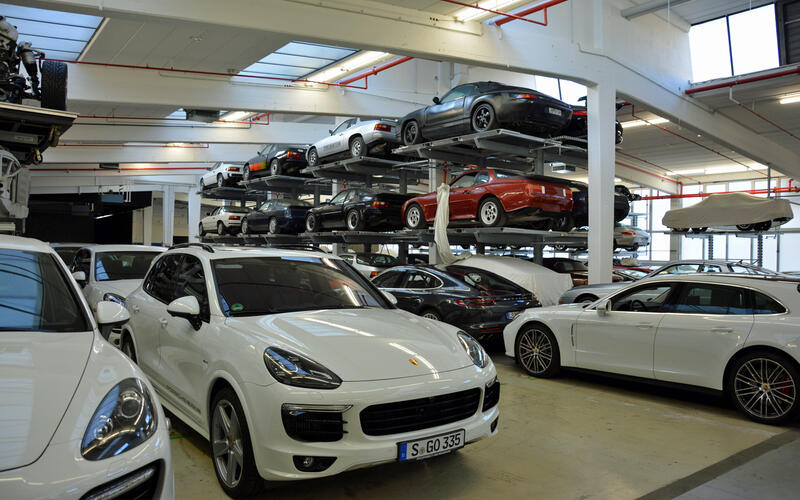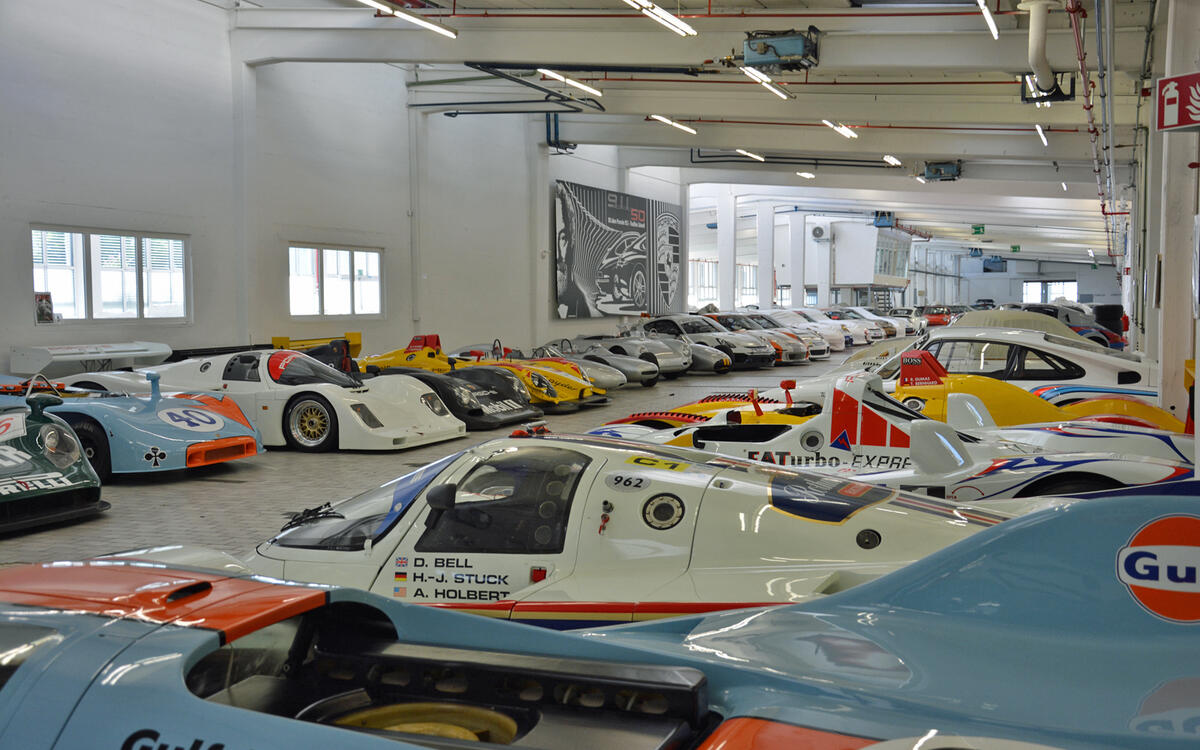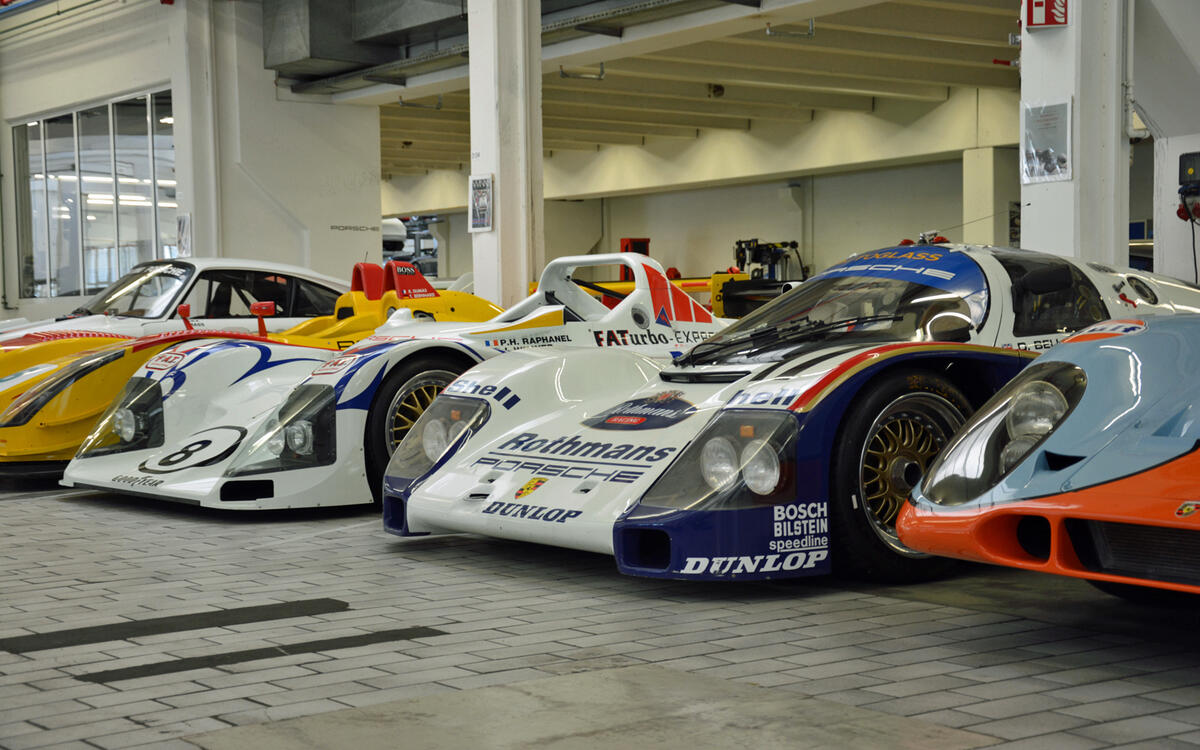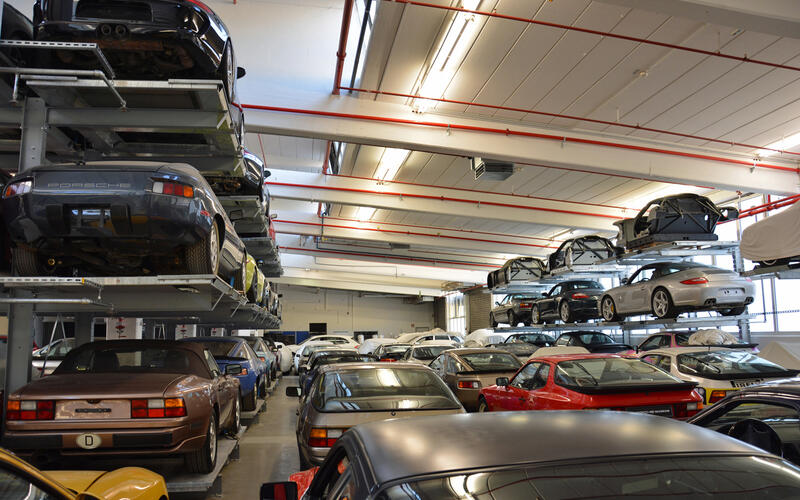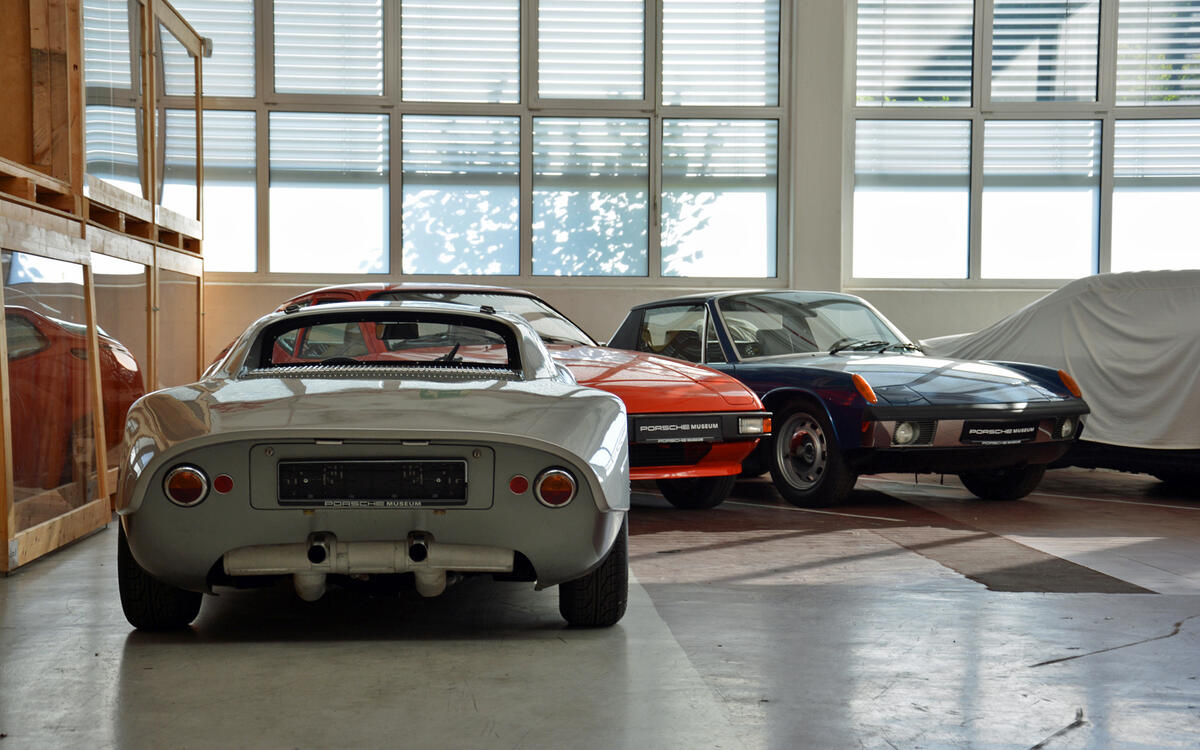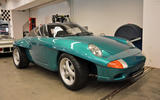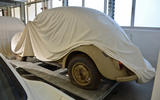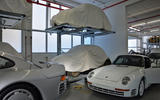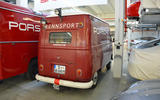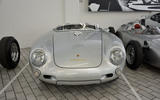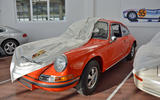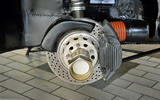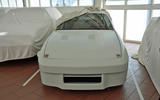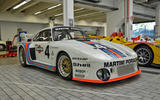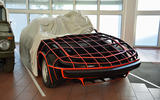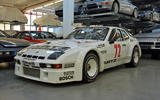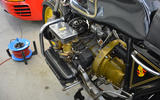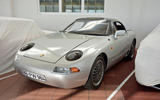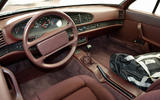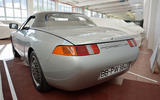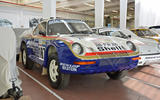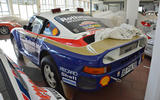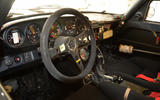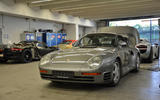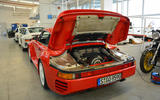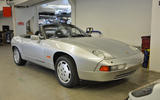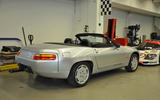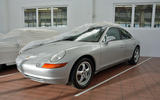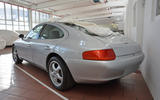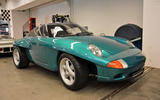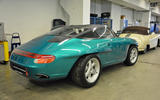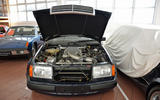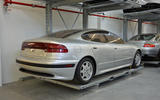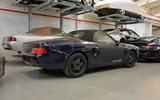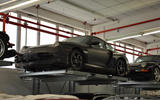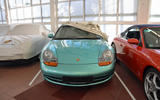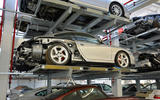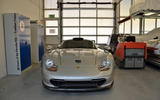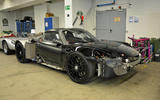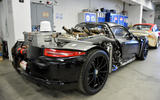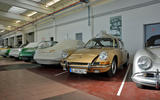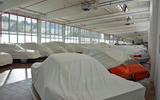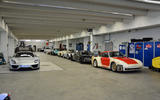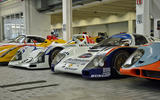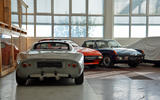 Slide of
Slide of
There is a facet of the Porsche collection outsiders rarely get to see.
A treasure trove is stashed away in a nondescript building in the Stuttgart area. Hundreds of cars (including prototypes, one-offs and race cars) are hidden behind closed doors and occasionally taken out for special events like motor shows and new car launches.
Autocar got a private tour with the lucky man, Alexander Klein, whose job it is to curate – and guard its priceless cars. Here’s our pick of the best Porsches you’ve (probably) never seen before:
 Slide of
Slide of
Porsche Type 60 (1938)
While it’s normally a stretch to call a Porsche a people’s car, company founder Ferdinand Porsche (1875-1951) developed the original Volkswagen Beetle before creating any of the sports cars that bear his name. He built the first test cars in 1936, and manufactured the first pre-production prototypes of what would affectionately become known as the Beetle in 1938. Porsche called the car Type 60.
 Slide of
Slide of
Porsche Type 60 (1938)
The Type 60 was very close to the regular-production Beetle, down to the shape of the body and the air-cooled four-cylinder engine mounted out back. It came with a four-speed manual transmission, a real novelty in an era when even some high-end cars settled for a three-speed unit. Ferdinand Porsche mounted a 35 hp evolution of the Beetle’s flat-four in the mid-engined Type 356 he built in 1948.
 Slide of
Slide of
Volkswagen Bus (1949)
Porsche has never dabbled in commercial vans, so it sourced its race support vehicles from other manufacturers. The original Volkswagen Bus was a popular option because it was solid, affordable and relatively cheap to operate. Porsche raised this example’s roof to carry more gear, creating a body style never offered by Volkswagen.
 Slide of
Slide of
Porsche 550 Spyder (1953)
Porsche’s 550 Spyder was designed for racing. Stuffing a 110 hp flat-four engine in a 544kg car was a recipe for victory, and the 550 Spyder became one of the most successful race cars of the 1950s. It continued winning races for years after production stopped.
While its racing pedigree is far from forgotten today, the 550 Spyder is more often associated with showbusiness than racing due to its unwished-for connection to the 1955 death of American actor James Dean.
 Slide of
Slide of
Porsche 597 Jagdwagen (1955)
In 1955 the newly-born West German Army asked auto manufacturers to submit a proposal for a low-cost, efficient four-wheel-drive vehicle in the vein of the Willys Jeep. Porsche responded with the 597, its first off-roader. It was a simple, function-over-form car powered by a 356-sourced flat-four engine installed behind the rear axle.
Porsche didn’t secure the government’s contract because the 597 was too expensive to manufacture, and the company wasn’t able to ramp up production in a timely manner. The contract was instead awarded to the DKW Munga.
 Slide of
Slide of
Porsche 911 S Type 915 (1970)
The Type 915 explored how to package four adult-sized seats into a 911. Porsche added about a foot of sheet metal between the axles, allowing the coupe to carry four passengers in relative comfort. Company executives ultimately chose not to turn the Type 915 into a production model because they feared it would cannibalize the brand’s other cars.
 Slide of
Slide of
Porsche 911 Carrera RSR Turbo 2.1 (1974)
Porsche created the winged, wide-bodied Carrera RSR Turbo 2.1 to illustrate the benefits of turbocharging a 911. Forced induction bumped the 2.1-litre flat-six’s output from 300 to over 460bhp. Scores of fans lined the Le Mans track in 1974 to see the RSR belch out flames as it sped past. The first car dropped out eight hours into the race, but the second one finished in second place.
 Slide of
Slide of
Porsche 911 Carrera RSR Turbo 2.1 (1974)
The 911’s stock brakes weren’t enough to safely bring the RSR’s turbocharged fury to a stop. The mechanical upgrades consequently included a model-specific braking system with drilled rotors and 917-style finned brake calipers. The RSR also received center-locking wheels and a revised suspension setup.
 Slide of
Slide of
Porsche 924 record car (1976)
The marketing team in Stuttgart turned to the phrase “what wins on Sunday sells on Monday” to promote the then-new 924. They decided to build one capable of setting a headline-grabbing speed record on the high-speed oval in in Nardò, Italy. The coupe was upgraded with a 250bhp engine and a wind-cheating body kit. The record attempt never took place.
 Slide of
Slide of
Porsche 935 (1976)
The 935 was an evolution of the 911 developed for endurance racing. Its turbocharged, fuel-injected flat-six engine could reliably make over 700bhp. Early 935s looked like a standard 911, but later evolutions of the car received a now-famous wind-sculpted front end with headlights mounted in the bumper and mirrors integrated into the bodywork.
 Slide of
Slide of
Porsche Type 995 (1978)
The design brief for the Type 995 put a strong emphasis on fuel economy, safety, and noise emissions. Based on the 928, the 995 could be equipped with a 3.0-litre V8 engine fitted with a cylinder deactivation system or a 2.2-litre four-cylinder engine. An electronically-controlled dual-clutch automatic transmission improved gas mileage – at least on paper.
 Slide of
Slide of
Porsche 924 Carrera GTR (1980)
The 924 Carrera GTR is another homologation special. Porsche built 17 examples of the car in 1980 to satisfy Group 4 regulations. Each one left the factory with a bigger intercooler, an integrated roll cage, an adjustable suspension and bigger brakes carried over from the 935.
 Slide of
Slide of
Hess-Porsche Single Track 356 (1980)
Instrument maker Peter Hess spent three and a half years building a 356-powered motorcycle from scratch. The bike’s heart is a 1.6-litre four-cylinder engine from a Super 90 whose output is limited 60hp, enough to send it to a top speed of 151mph.
 Slide of
Slide of
Hess-Porsche Single Track 356 (1980)
The instrument cluster, the shaft drive unit and the forks came from a BMW motorcycle. The frame was designed by Hess, and he increased the engine’s oil capacity to run two oil coolers in order to keep its temperature in check. This one-of-a-kind motorcycle was so well executed that it was approved for road use by the German authorities.
 Slide of
Slide of
Porsche 959 wind tunnel mule (1982)
This early 959 prototype was extensively tested in a wind tunnel in 1982, a year before the model left enthusiasts speechless at the Frankfurt motor show. Porsche points out the test mule’s spoiler is integrated into the deck lid, and its underbody is equipped with a plastic cover. Hand-written notes all over the body are a testament to the numerous tweaks made before achieving a 0.31 drag coefficient.
 Slide of
Slide of
Porsche 959 concept (1983)
The 959 was first seen as a concept at Frankfurt. A radical evolution of the 911, the concept previewed an immensely powerful halo car designed to comply with the FIA’s Group B regulations. The visual differences between the concept and the production model included additional air vents cut into the front bumper, air intakes behind the doors and different wheels.
 Slide of
Slide of
Porsche 984 (1984)
The 924 filled the gap left by the 914 on the bottom rung of the Porsche lineup, but the Stuttgart-based brand didn’t build another mid-engined model until it introduced the Boxster in 1996. The 984 shows what an entry-level rear-engined convertible would have looked like in the 1980s.
 Slide of
Slide of
Porsche 984 (1984)
Light, aerodynamic and affordable, the 984 was built to lure younger enthusiasts into showrooms, especially in the US, where Porsche predicted the bulk of sales would come from. It used an air-cooled, 2.0-litre flat-four engine tuned to send 135bhp to the rear wheels via a manual transmission.
 Slide of
Slide of
Porsche 984 (1984)
The cabin is put together using 944 bits and pieces. The fully finished interior illustrates how close the 984 came to joining the 911 in Porsche showrooms. The company explains development stopped abruptly after new car sales in the US collapsed in the wake of the 1987 stock market crash.
 Slide of
Slide of
Porsche 959 Paris-Dakar (1985)
The 959 never raced in a Group B rally event due to the exceptionally high cost of participating in the series. Race car driver Jacky Ickx convinced Porsche to put the car on stilts and enter it in the Paris-Dakar, an off-road endurance race that takes a massive toll on both man and machine.
 Slide of
Slide of
Porsche 959 Paris-Dakar (1985)
An array of mechanical issues prevented the 959s from reaching the finish line in the 1985 Dakar. The team came back with a vengeance the following year and earned a one-two finish. The 959 won other rallying events in Europe, but it never made it back on the Dakar podium.
 Slide of
Slide of
Porsche 959 Paris-Dakar (1985)
Turning the 959 into a rally car required extensive modifications. Thick skid plates were added under the car to protect vital mechanical components from dangerous desert encounters, and the interior received a full roll cage. Porsche sometimes used a Mercedes-Benz 280GE fitted with a 928-sourced V8 as a technical support vehicle.
 Slide of
Slide of
Porsche 959 (1986)
Porsche initially turned the 959 concept into a production model with a single mission in mind: to dominate Group B racing. One of the best performance cars of its era, the 959 received a twin-turbocharged 2.8-litre flat-six engine which channeled its 444bhp output to both axles.
 Slide of
Slide of
Porsche 959 (1986)
Extensive use of lightweight materials such as Aramid and Nomex kept the 959’s weight in check. It was launched as a limited-edition model, and it sold out quickly in spite of an astronomical price of 420,000 Deutschmarks. Porsche’s records indicate 292 cars were built; we saw at least four during our tour of the warehouse.
 Slide of
Slide of
Porsche 928 H50 (1987)
Concepts like the 928 H50 suggest Porsche has attempted to link performance and space throughout most of its history. The H50 was an experimental 928 with a stretched wheelbase, small rear doors and space for four passengers. Engineers put 5000 miles on the car before deciding it wasn’t rigid enough to deliver the driving dynamics buyers expect from a Porsche.
 Slide of
Slide of
Porsche 928 Convertible (1987)
Had things gone as planned, the 928 would have succeeded the 911 as the flagship of the Porsche family. The company’s research and development department built an experimental 928 convertible in preparation for a possible production model to replace the topless 911. Upper management mothballed the project in late 1988 to save money.
 Slide of
Slide of
Porsche 928 Convertible (1987)
The convertible was all but identical to the standard 928 from the rocker panels up to the belt line. Above that, it gained a long deck lid and a cloth soft top which was stored directly behind the passenger compartment. The convertible conversion transformed the 928 from a 2+2 into a two-seater, and made it 50kg heavier.
 Slide of
Slide of
Porsche 989 (1988)
Porsche believed introducing a sporty, family-friendly sedan would help it claw out of a financial rut in the late 1980s. The 989 was envisioned as a four-door 911, but it ditched the air-cooled flat-six engine for a 4.2-litre V8 closely related to Audi’s eight-cylinder. It provided 350bhp in its most basic state of tune.
 Slide of
Slide of
Porsche 989 (1988)
The 989 came close to production; a 1995 launch date was even locked in. Porsche executives cancelled the project in 1991 after realizing the 989 would be far too expensive to design and build. The 996-series 911 borrowed a few styling cues from the 989, but the idea of a Porsche sedan for four was dropped for over a decade.
 Slide of
Slide of
Porsche Panamericana (1989)
The design team drew the Panamericana concept as they explored ways to freshen the 911’s design after decades of evolutionary revisions. A toned-down version of the beach buggy-like Panamericana would have revolutionized Germany’s favorite rear-engined sports car. While the concept never reached production, a handful of styling cues (including the slanted headlights) were later found on the 993-series 911 and the original Boxster.
 Slide of
Slide of
Porsche Panamericana (1989)
The Panamericana concept was based on the 964-series 911, and its futuristic-looking body was manufactured using lightweight composite materials. The team who worked on the Panamericana confidently believed it would spawn a limited-edition model in the early 1990s, but executives canned the project for financial reasons.
 Slide of
Slide of
Mercedes-Benz W124-based V8 test mule (1991)
Engineers tested the 989’s 4.2-litre V8 engine in real-world conditions by installing it under the bonnet of a Mercedes-Benz W124 E-Class. Period document note the W124 was chosen because it was close to the 989 in terms of size, weight, and performance. Never series-produced, the water-cooled V8 was also seriously considered as a replacement for the 911’s air-cooled flat-six.
 Slide of
Slide of
Porsche 932 concept (1991)
The 932 is one of the most enigmatic cars in the collection. Porsche explains it’s the work of Italdesign, but it admits every morsel of information about the car’s origins has been lost. Italdesign doesn’t even remember working on the project, so we’re no closer to deciphering its true purpose. All we know is it was never a candidate for production.
 Slide of
Slide of
Porsche Boxster test mule (1993)
The 968-derived bodywork hides the engine and the running gear of the original Boxster. This Franken-Porsche logged thousands of miles in the world’s harshest climates as engineers gathered data on the new mechanical components before releasing the car to the public. Most test mules end up crushed, but this one was spared at the end of its life cycle.
 Slide of
Slide of
Porsche Boxster test mule (1993)
Brand-new from the ground up, the Boxster was a toned-down version of the eponymous concept car presented during the 1993 edition of the Detroit motor show. While the test mule’s clever camouflage might have tricked onlookers into thinking the Boxster would be a mere evolution of the 968, the two models shared no major components.
 Slide of
Slide of
Porsche 911 test mule (1996)
The factory went to great lengths to keep the 996-series 911’s design hidden from the press and the public. This test mule shows Porsche installed fake upright headlights to mask the 996’s sleeker curved units, a controversial styling cue that broke all ties with the past.
 Slide of
Slide of
Armoured Porsche 911 (1997)
This one-of-a-kind armoured 911 was a Porsche for motoring enthusiasts whose enemies would happily use them for target practice. Engineers added a four-inch thick windshield and strategically-located steel inserts to protect the occupants from various types of ammunition. It weighs approximately 181kg more than stock, but Klein assured us it still drives like a 911.
 Slide of
Slide of
Porsche 911 cutaway (1997)
Porsche also keeps cars whose sheet metal has been peeled back to reveal parts invisible to the naked eye. These are often displayed at motor shows around the world and at new car launch events. This one illustrates how the flat-six engine is packaged in the 996-generation 911.
 Slide of
Slide of
Porsche 911 GT1 Strassenversion (1997)
The 911 GT1 was turned into a road-legal production model for homologation reasons. Hailed as the 959’s long-awaited successor, it was fast, rare and incredibly expensive. A 3.2-litre flat-six mounted between the passenger compartment and the rear axle generated approximately 550bhp, a stunning statistic at the time. Production stopped after approximately 25 examples were built.
 Slide of
Slide of
Porsche Cayenne Cabriolet (2002)
Porsche tried upping the Cayenne’s cool factor by chopping off its roof. The end result was undeniably more awkward than captivating, and the project was quickly abandoned, but valuable lessons were learned from it. An evolution of the prototype’s trick folding roof equips the current 911 Targa.
 Slide of
Slide of
Porsche 918 Spyder test mule (2012)
No, this 918 Spyder wasn’t an extra in Mad Max. It’s a test mule cobbled together by taking near-production 918 components and installing them in a highly modified Carrera GT body. Retaining the stock headlights wasn’t possible, so the prototype-building department bolted small LED lights right below the bonnet.
 Slide of
Slide of
Porsche 918 Spyder test mule (2012)
Shoehorning the 918 Spyder’s plug-in hybrid powertrain into a Carrera GT body presented several tricky packaging challenges; they’re two completely different cars. The prototype was nonetheless tested for miles on end on private race tracks in the early 2010s before the drivetrain was signed off.
 Slide of
Slide of
Always in the family
We saw every Porsche model since the brand’s inception in the warehouse. Klein said the company has owned most of the cars in its collection since they were new. The team is open to buying cars when there is a big demand for more than one example of a particular model, when it finds something truly unique or when it needs to fill a gap. Only unrestored, all-original examples are eligible for a spot in the warehouse.
 Slide of
Slide of
Long-term storage
Covers protect cars from prolonged exposure to direct sunlight, dust, and prying eyes. While some of the sheets exceptionally came off during our visit, Klein informed us a handful of cars would remain hidden regardless of how nicely we asked. Some of the prototypes stored in the facility have never been shown to the public before.
 Slide of
Slide of
The supercar contingent
The collection houses at least one example of every road-going supercar Porsche has built since the 959 broke cover as a concept car in 1983. Klein’s team also preserves some of the research and development department’s test mules because they shed valuable insight into the arduous work put into transforming a design sketch into a bahnstormer.
 Slide of
Slide of
Front-engined models
Part of the warehouse is dedicated to front-engined cars like the 924, the 944, the Cayenne and the Panamera. One of Porsche’s most recent models, the Panamera Sport Turismo, already has a spot in the collection next to the saloon version. It’s the most recent addition to the vault.
 Slide of
Slide of
From the pits to the museum
Racing has defined Porsche since its earliest days, so it comes as no surprise that a large chunk of the warehouse is reserved for the company’s race cars. Endurance racers that triumphed at Le Mans share the floor with dusty rally cars and eye-catching one-offs built for world record attempts.
 Slide of
Slide of
As-is
Porsche goes to great lengths to leave its race cars as original as possible. The team’s goal is to keep the cars in the condition they were in when they crossed the finish line weeks, years or decades ago. Some of the Le Mans cars in the collection have never been washed. Klein joked we could count the insects that lost their lives on the windshield during each race.
 Slide of
Slide of
Rush hour
As Porsche’s lineup grows, so does its collection. Cars are stacked three-high on massive shelves that line the walls, but parts of the warehouse nonetheless look like central London during rush hour. An average of 15 cars join the fleet annually, and Klein acknowledged storage space is not endless.
 Slide of
Slide of
Maintaining the fleet
Porsche employs one lead mechanic and five full-time technicians to maintain its collection. About 350 cars out of the roughly 570 it owns are currently drivable, including race cars. In 2016, the brand used 225 of them in various events around the world.
We take a virtual tour of the anonymous warehouse where Porsche stores some of its biggest surprises, including plenty of cars it nearly put in production. Join us for a visit
Advertisement



